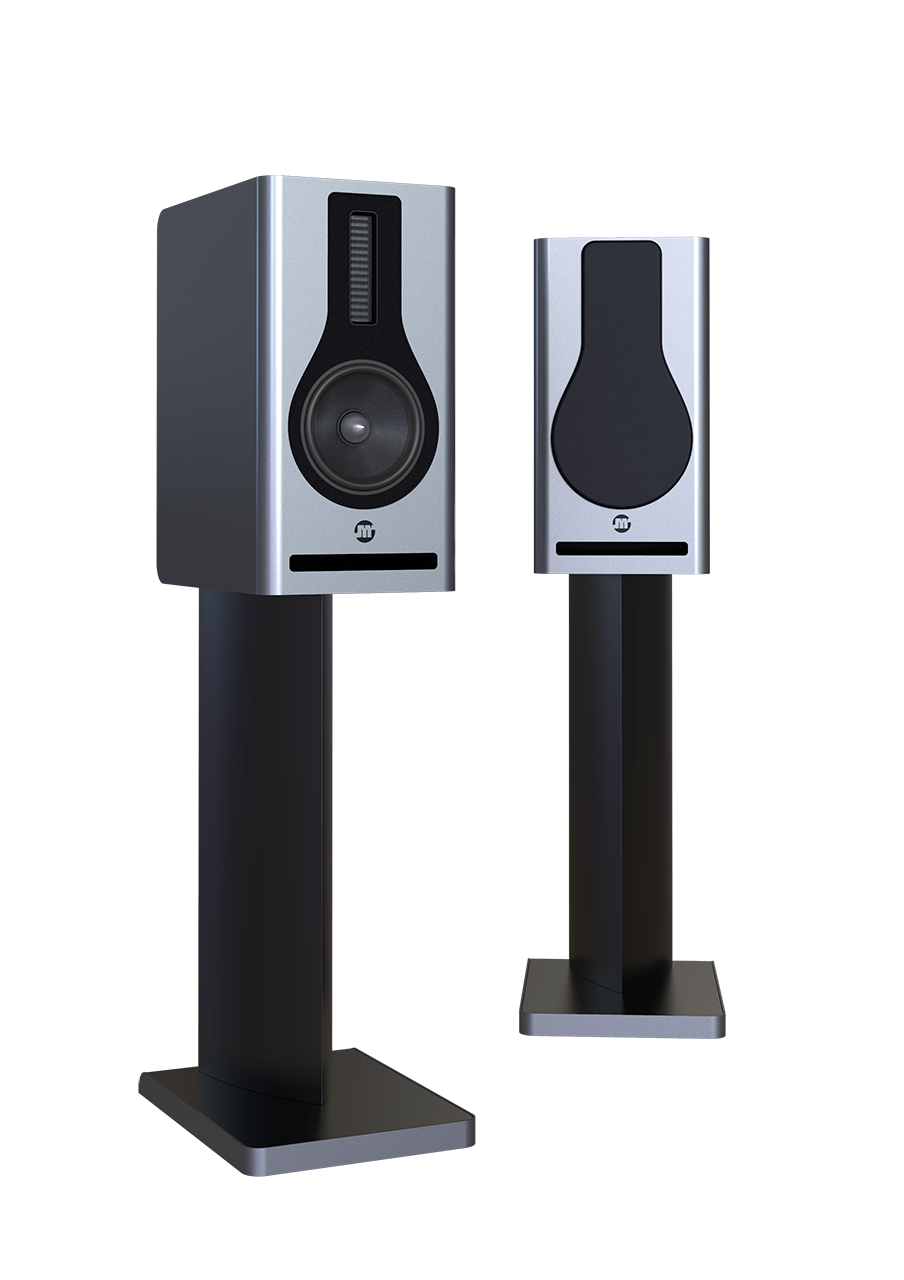EMP GRANDE
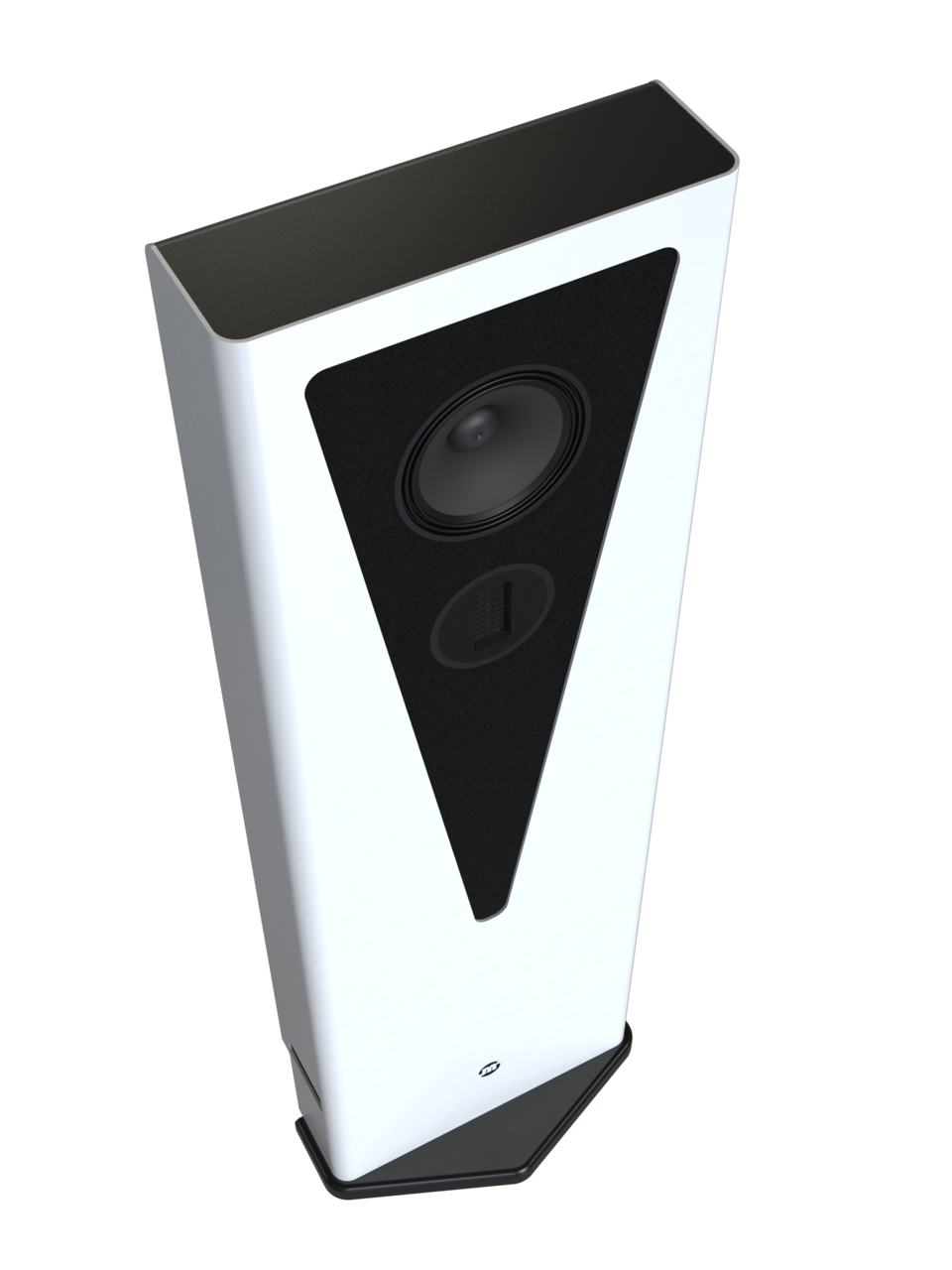
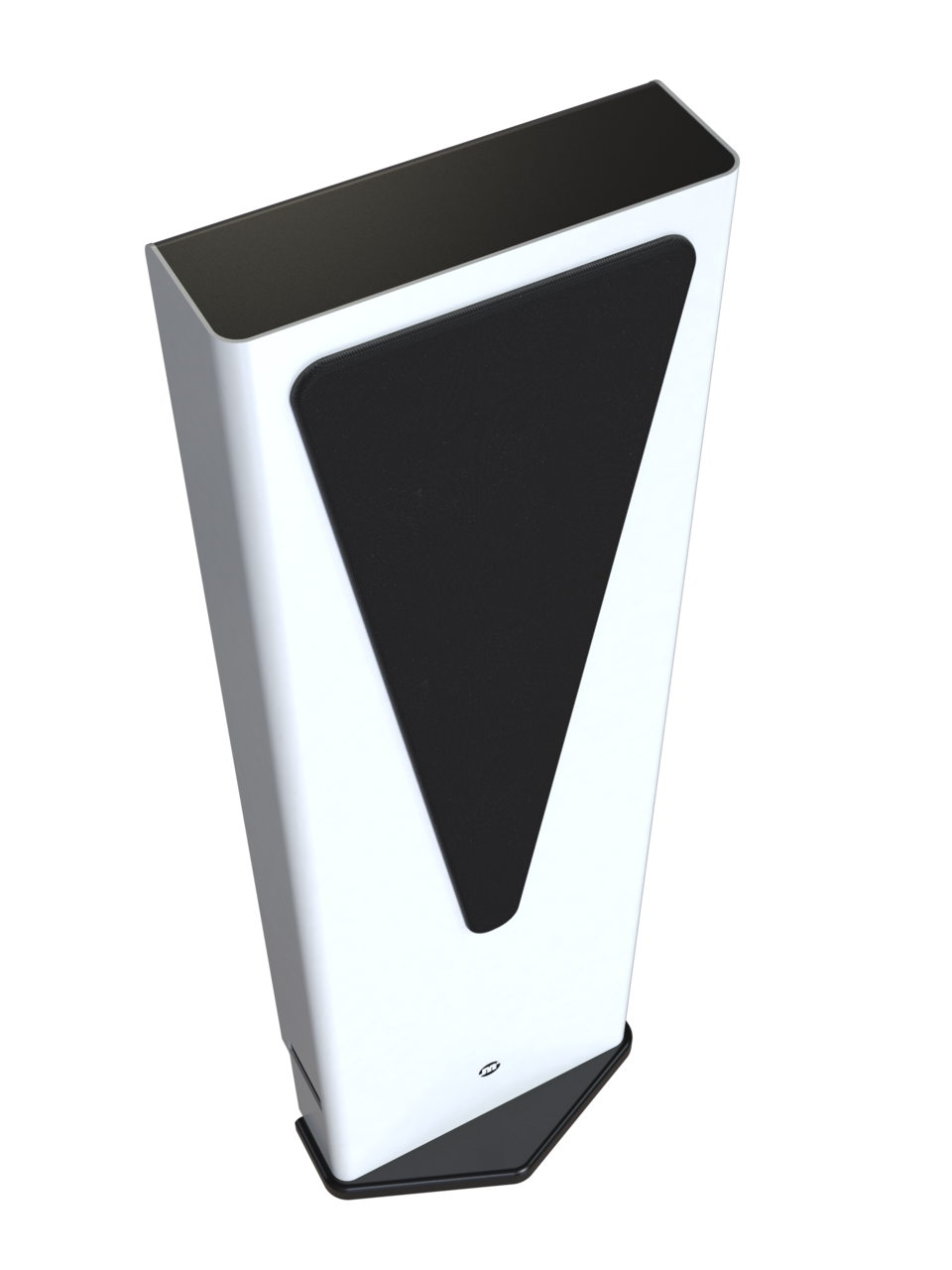
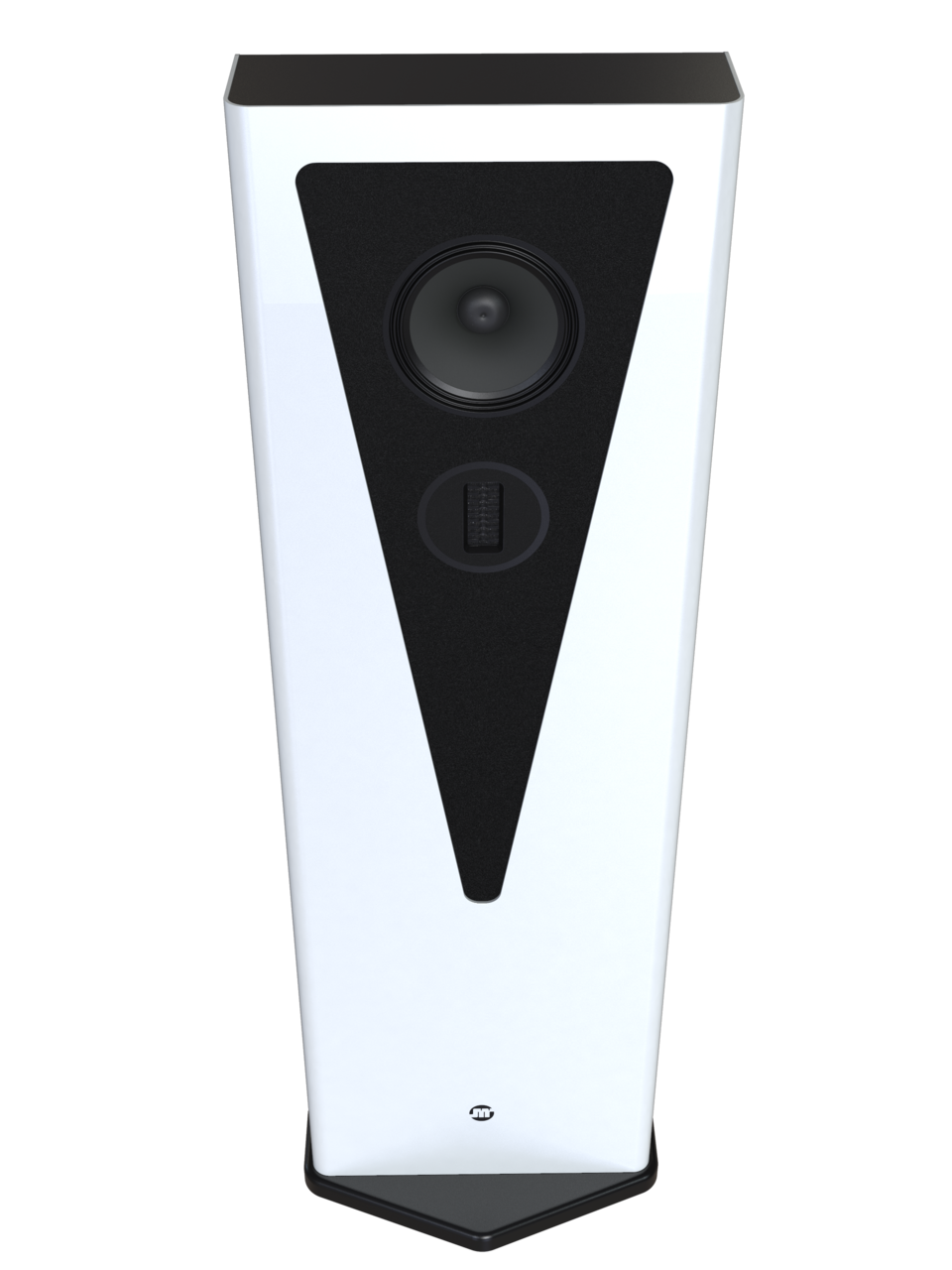
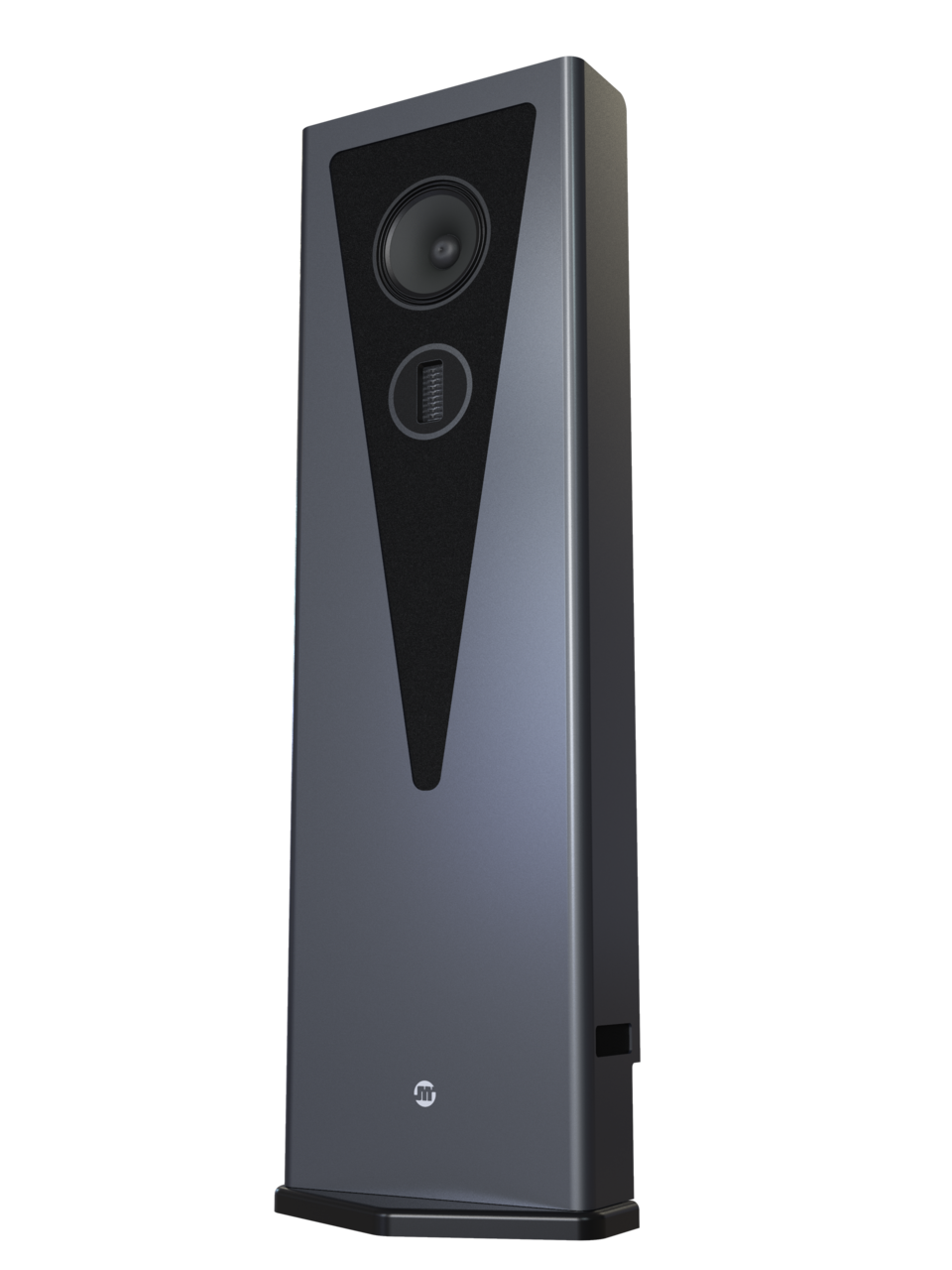
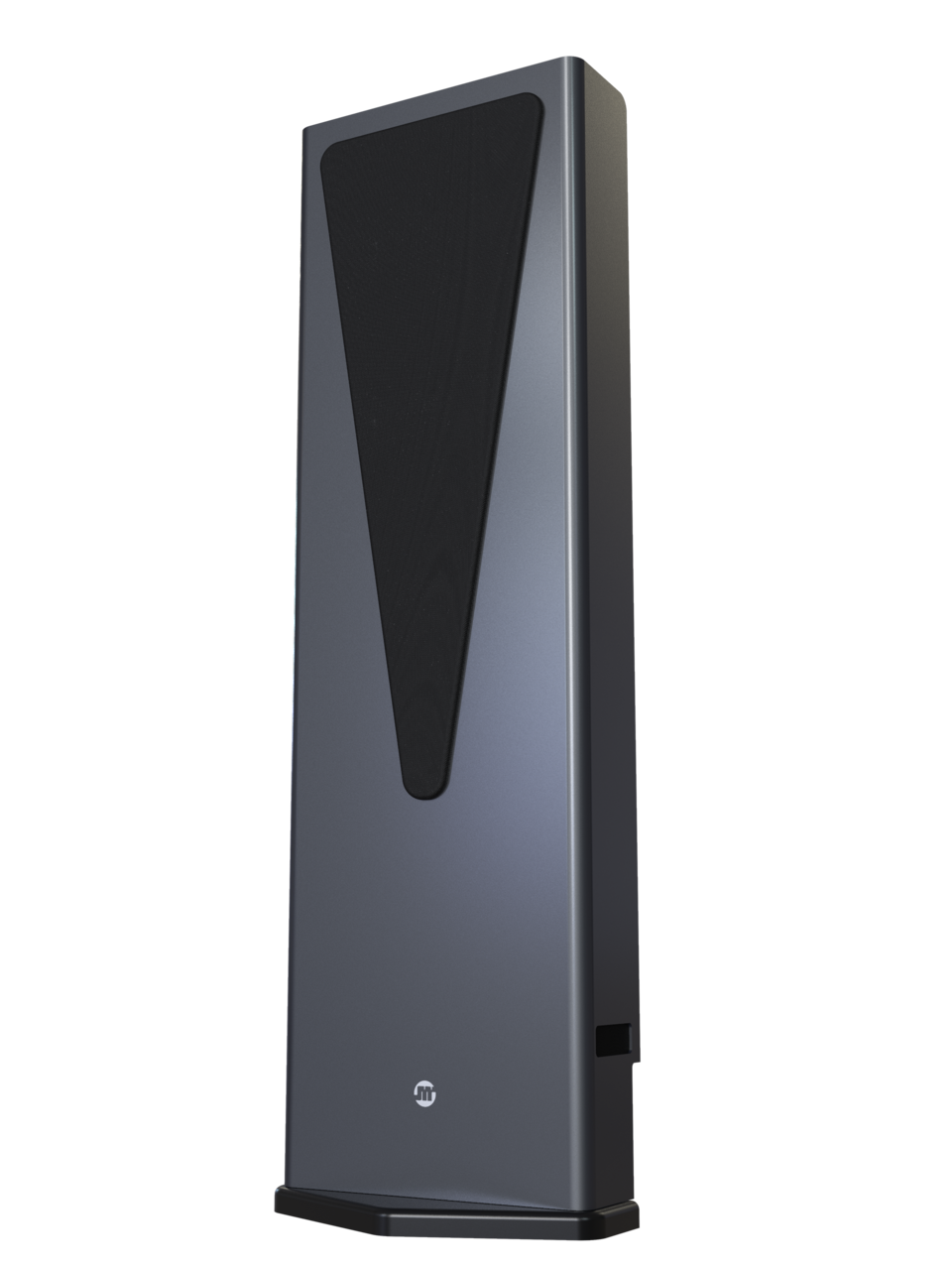
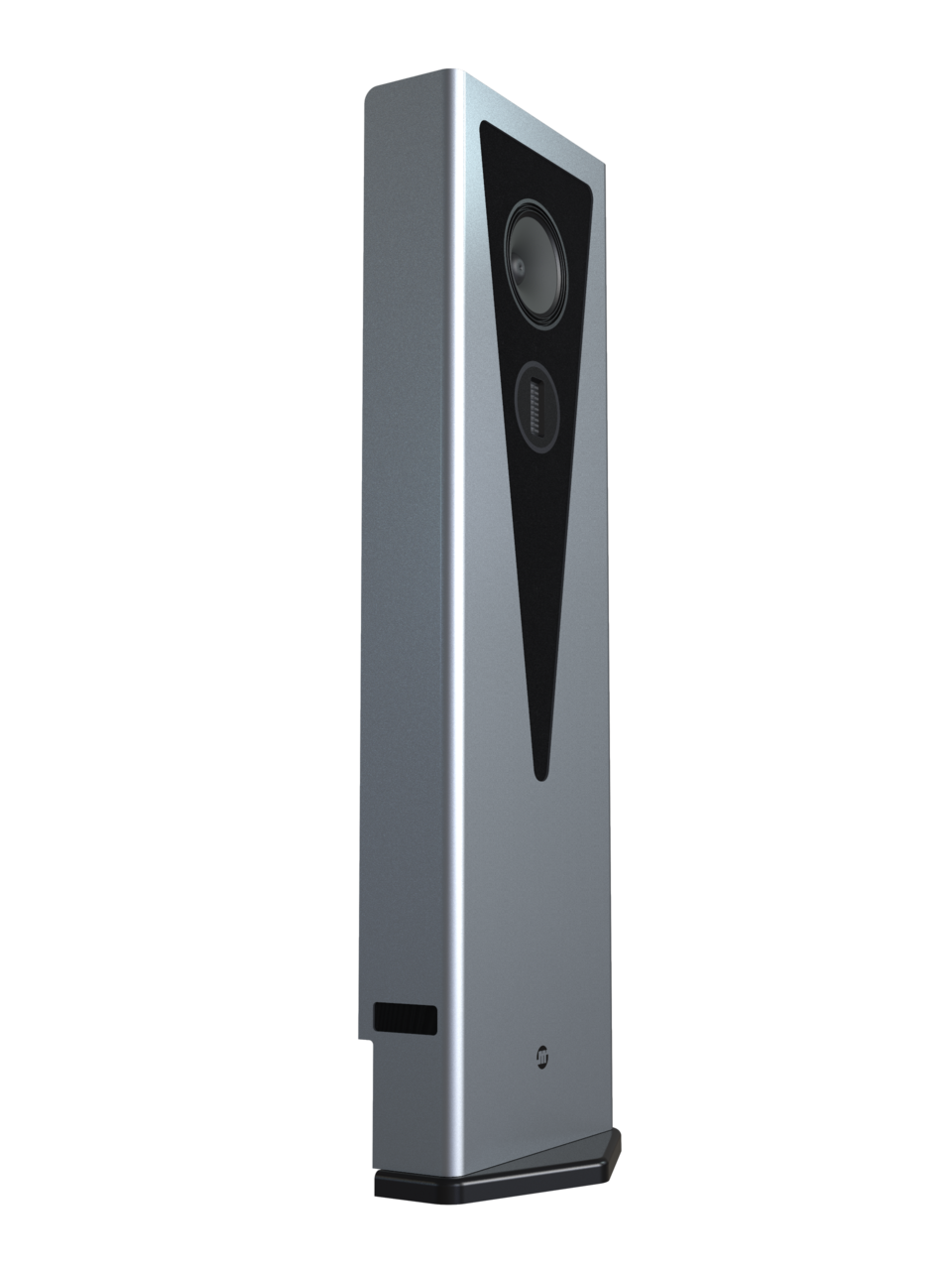
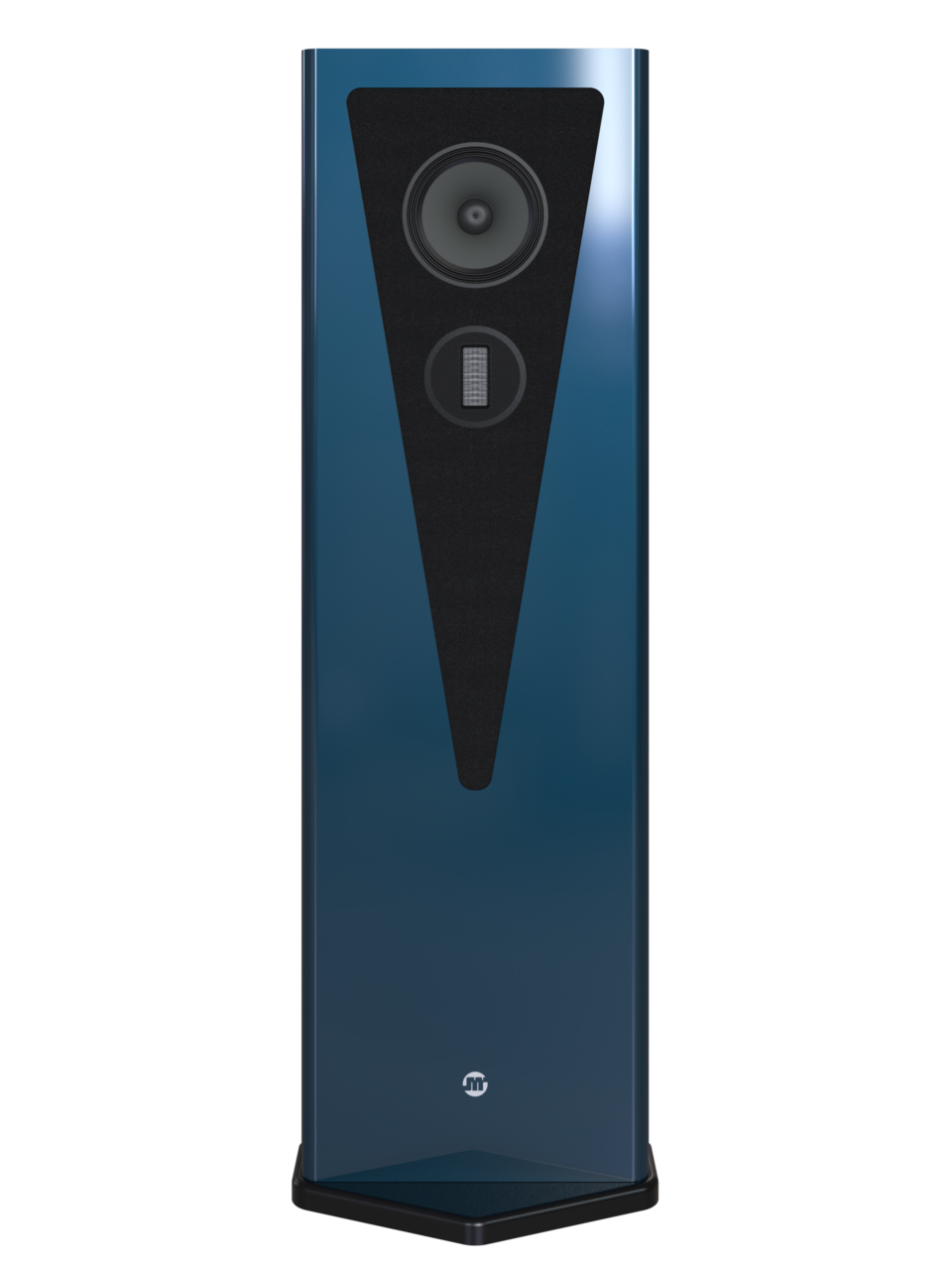
EMPGRANDE
6 800 €
6 800 €
8 000 €
The EMP Grande speakers are very powerful speakers. Designed with the same rigor as the most successful models in our range, it concentrates all the know-how of the JMR brand and retains a remarkable quality of timbre.
Finition

Pearly White

Anthracite grey

Night Blue
This EMP Grande is the third generation of a speaker designed for medium and larger rooms. It is installed on the floor and placed against the wall to save space, while using the rear wall as a sound barrier.
Effective and surprising, the EMP Grande wall-mounted speaker stands out from more traditional speakers thanks to its musical quality and its depth of only 12 cm. The EMP speaker offers a totally immersive music experience thanks to its technology that allows it to use walls as additional acoustic loads and to deliver a higher quality bandwidth than other equivalent speakers.

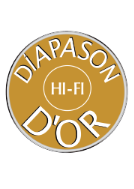


AN INNOVATIVE TECHNOLOGY
In addition to this technology, the EMP Grande speakers have an aerodynamic tweeter that works on the treble and a 16 cm paper cone midrange driver. As for its membrane, it folds like an accordion, pinching the air between the folds, rather than pushing it, for a better dispersion of high frequencies throughout your room.
A BRILLIANT RESULT
This in-wall speaker is the culmination of craftsmanship, and will naturally go further in terms of performance, as it has a deeper bass range for more impact. Its high register can go higher with a more detailed finish.
UNE ENCEINTE UNIQUE
As a result, this EMP Grande speaker is unique and more upscale in its class, allowing you to enjoy its music in a larger room and giving you a lively and natural listening experience. This speaker embodies the high level of rigor that JM Reynaud offers, especially in his energy and intense musical moments.
| Impedance | 8 ohms (min 6.8 ohms) |
|---|---|
| Frequency response | 38hz-30khz |
| Allowable power | 100 Watts |
| Peak power | 200 Watts |
| Power of use | 40 to 180 Watts |
| Sensibility | 88.5 db/W/m (2,83V) |
| Distorsion | less than 2% (200hz at 10khz at 85db) |
| Type of filtering | 12/12db/Octave to 1200hz |
| Connection | Single-wire + 3rd terminal grounding passive filter |
| Dimensions | H: 110cm - L: 28cm - P: 39cm |
| Weight | 38 Kg |

Nothing found.
VOCE GRANDE
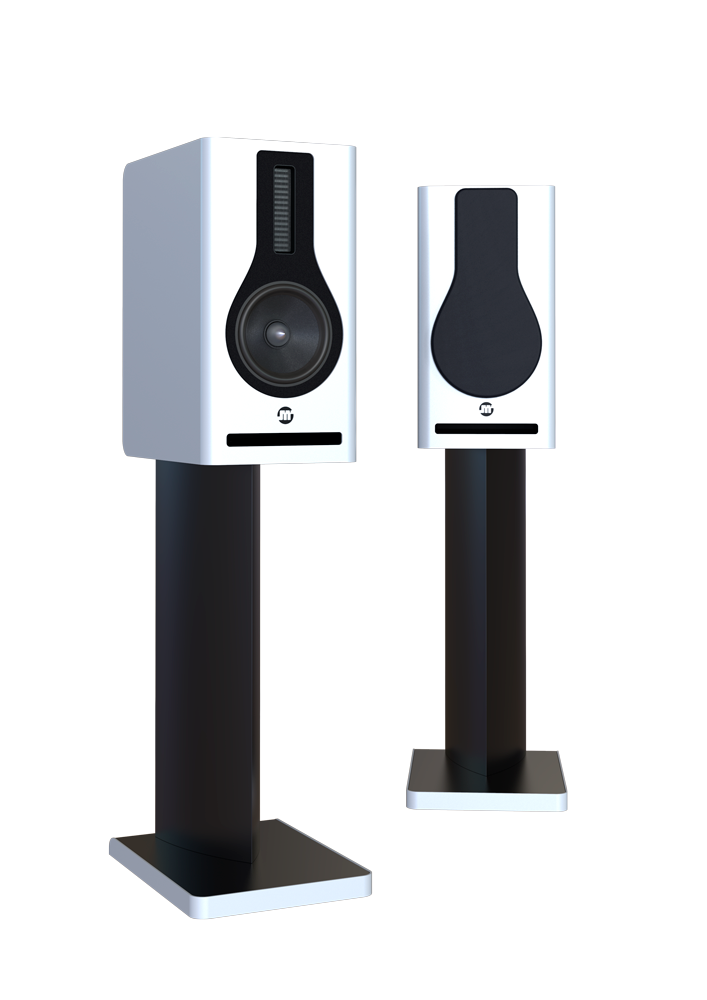
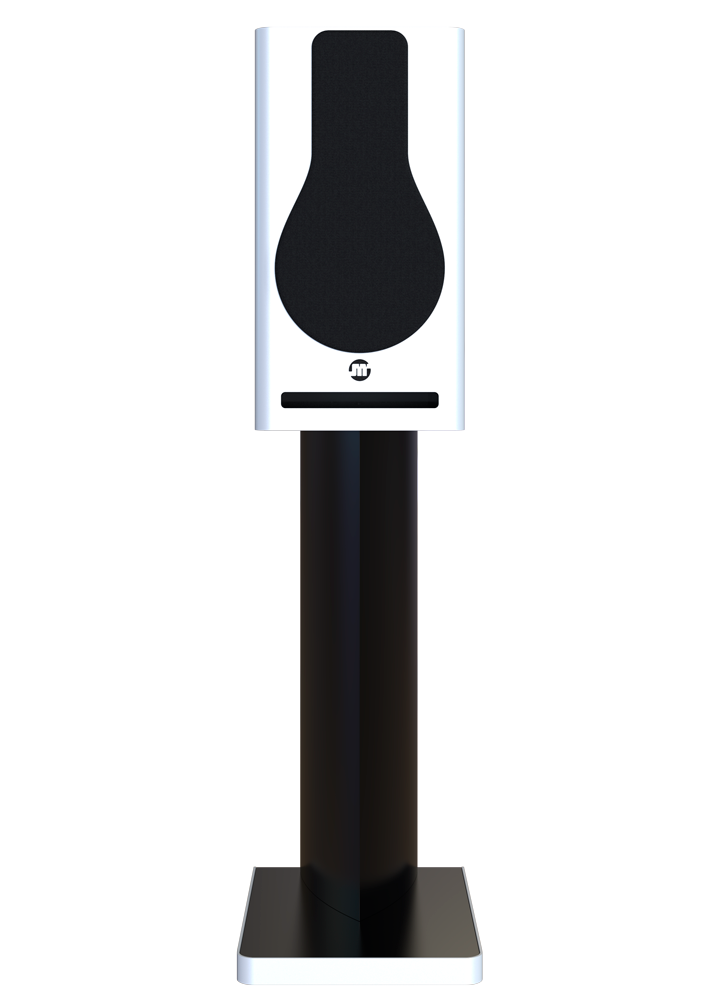
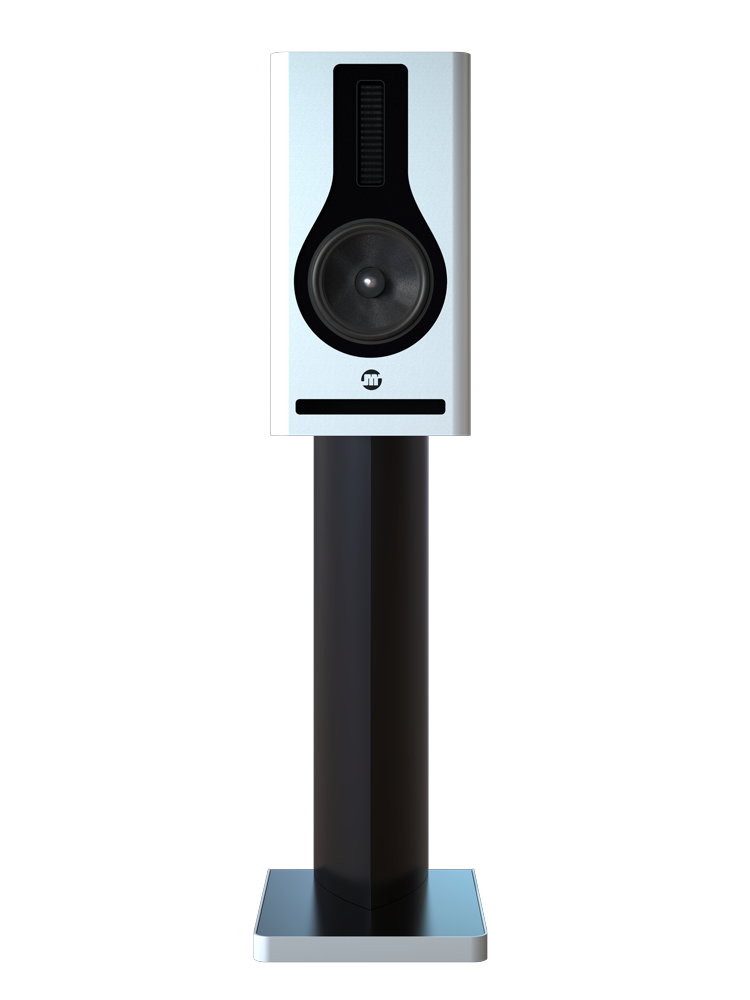
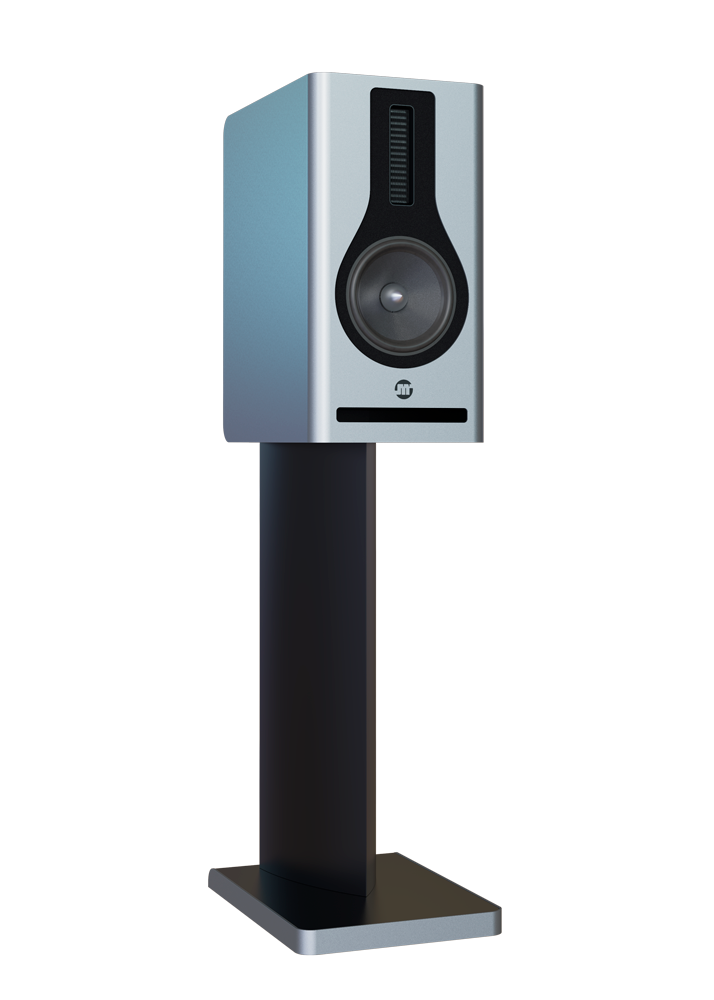
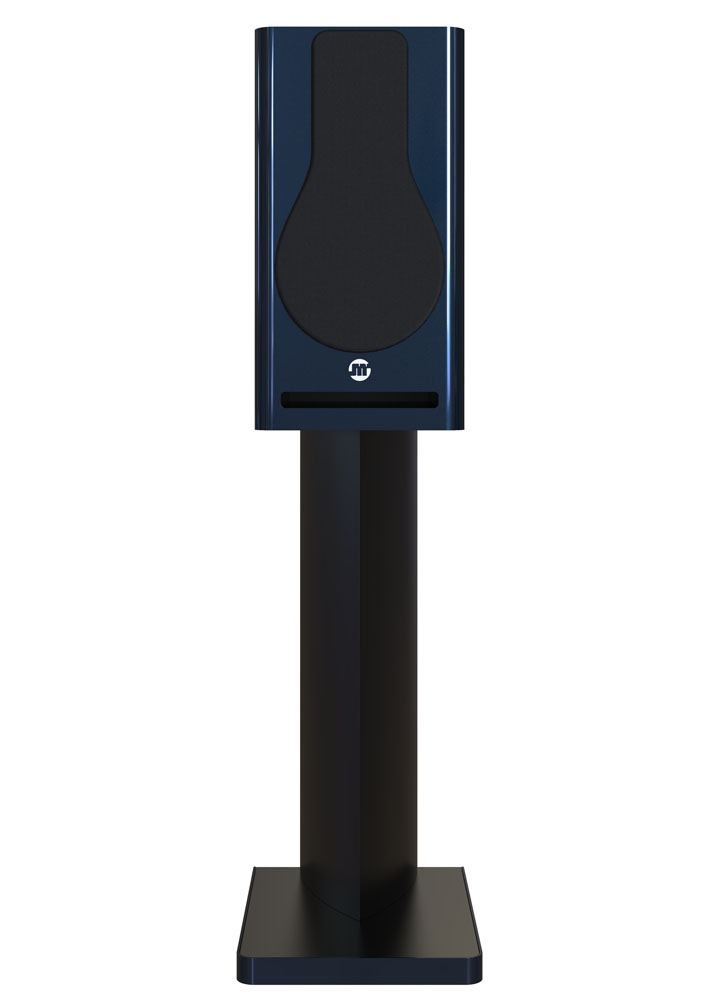
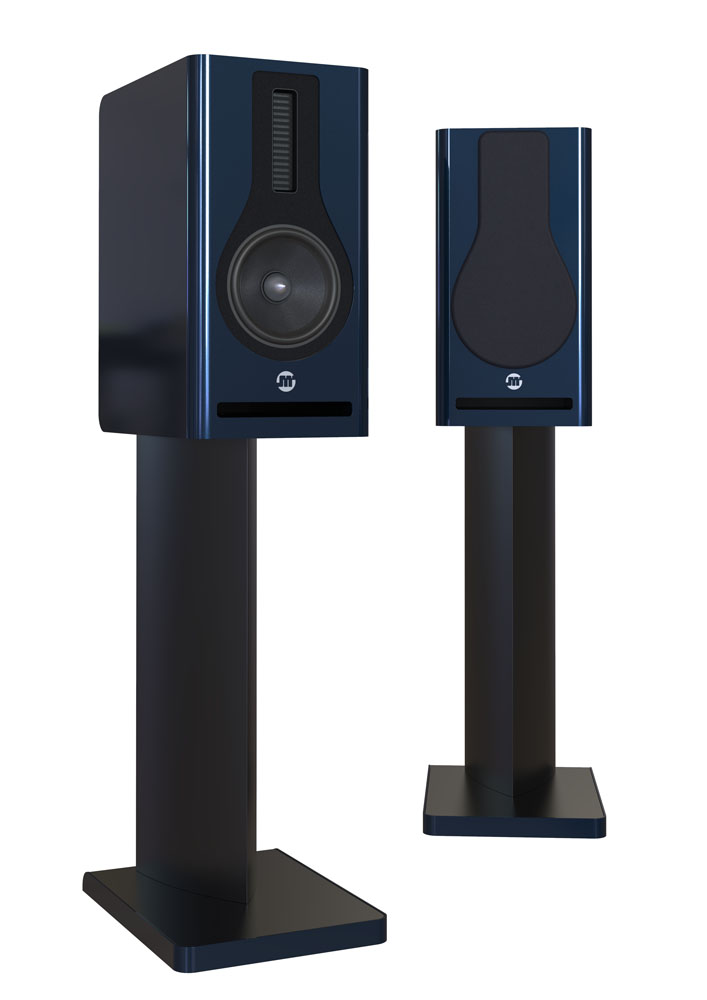
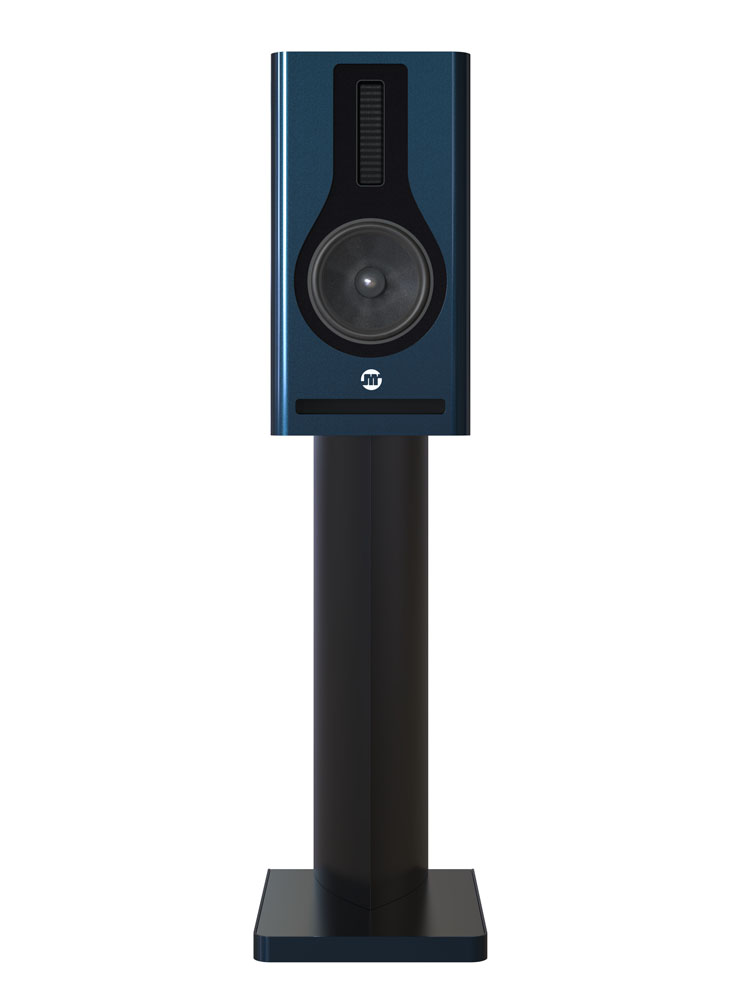
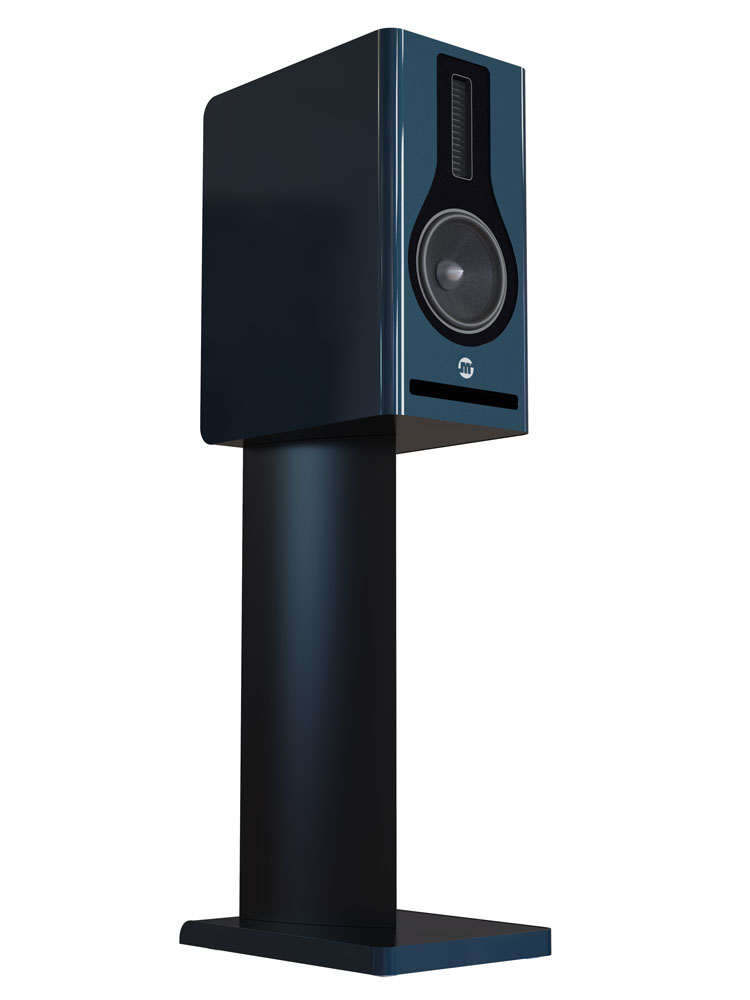
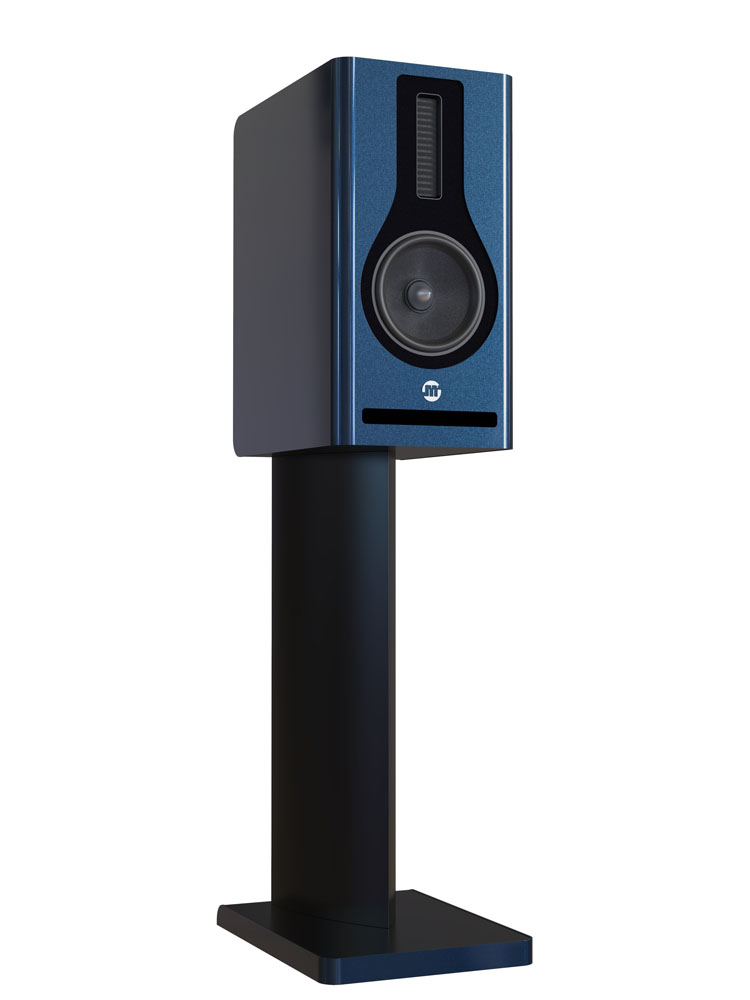
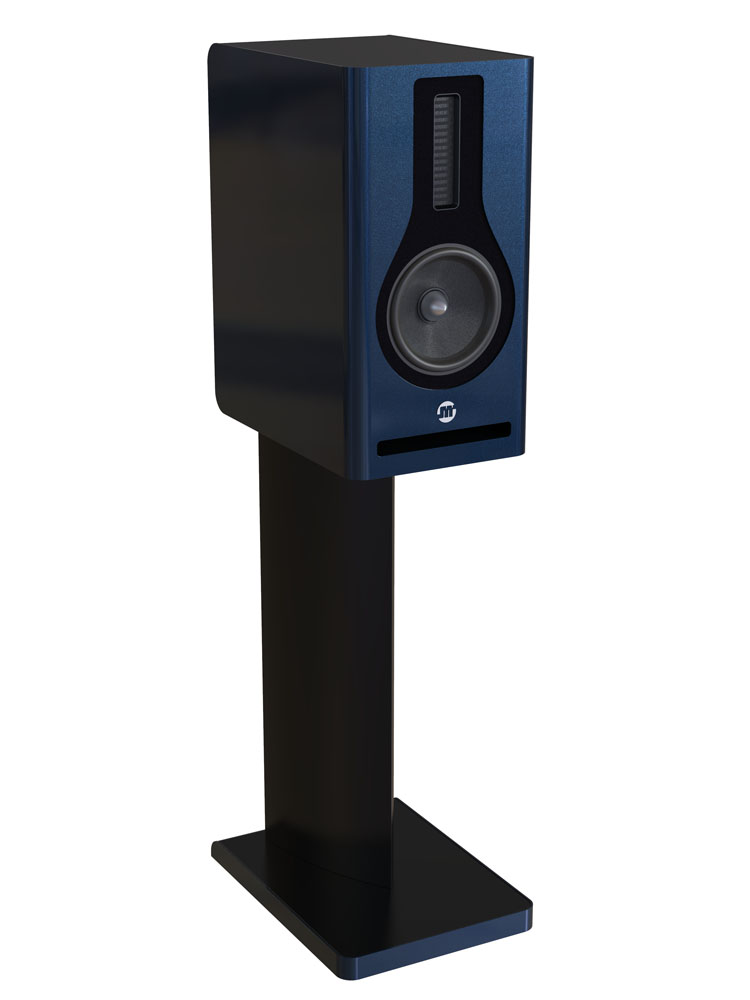
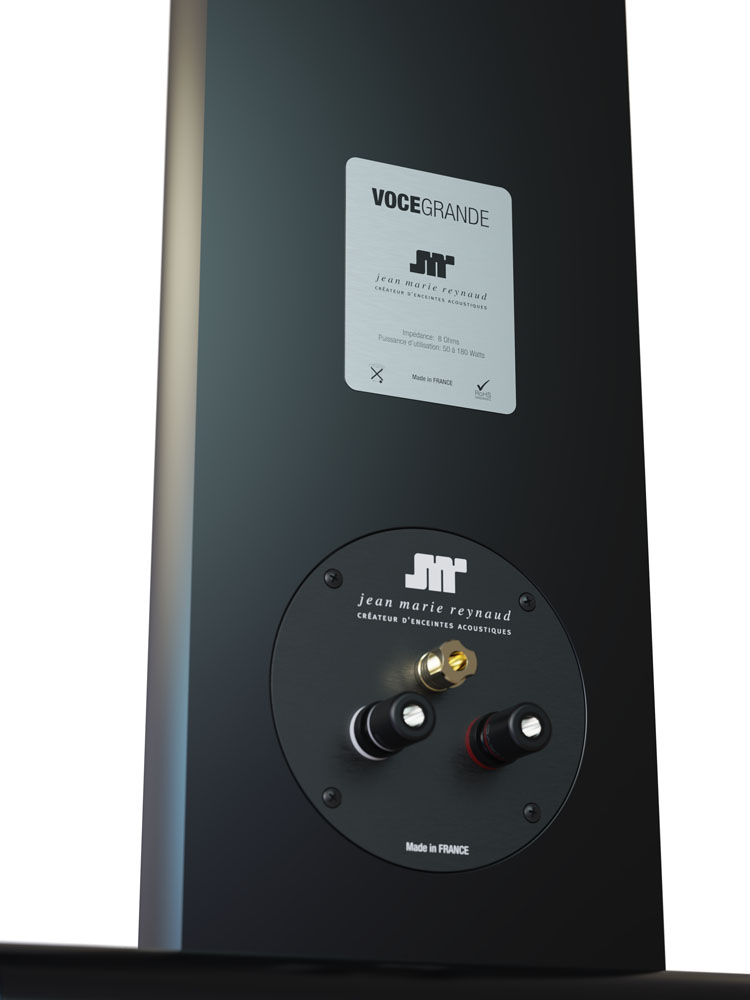

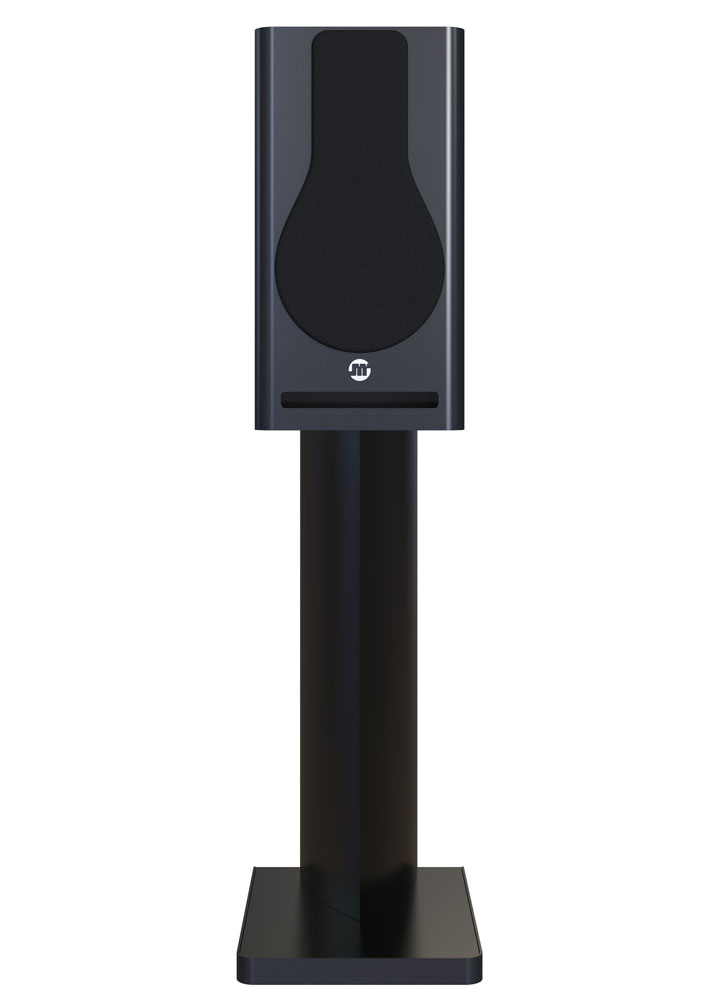
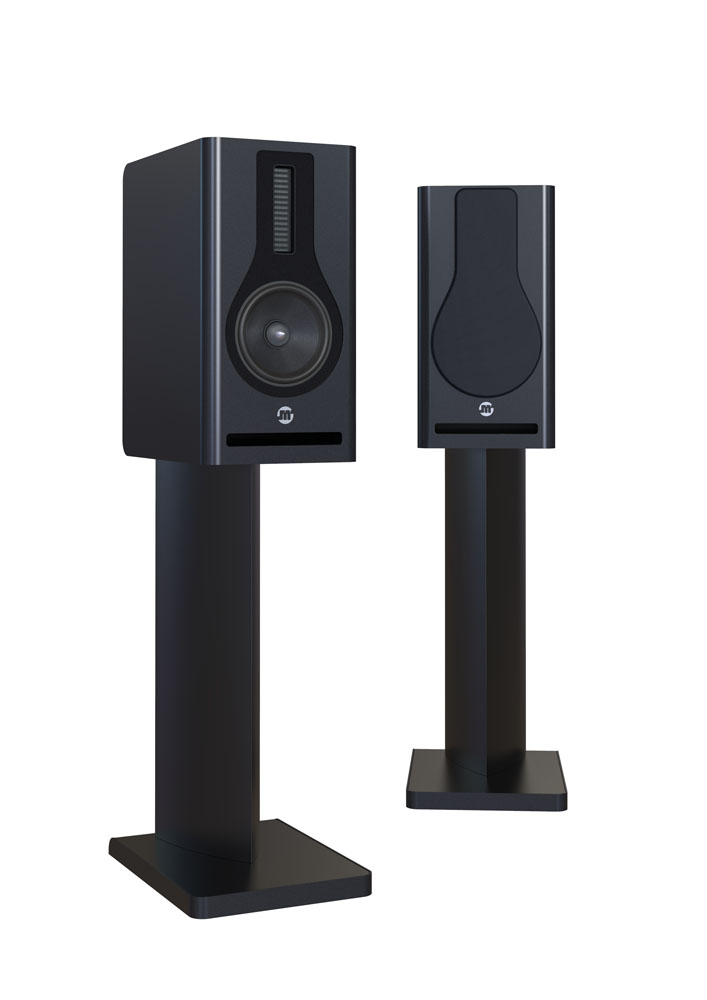
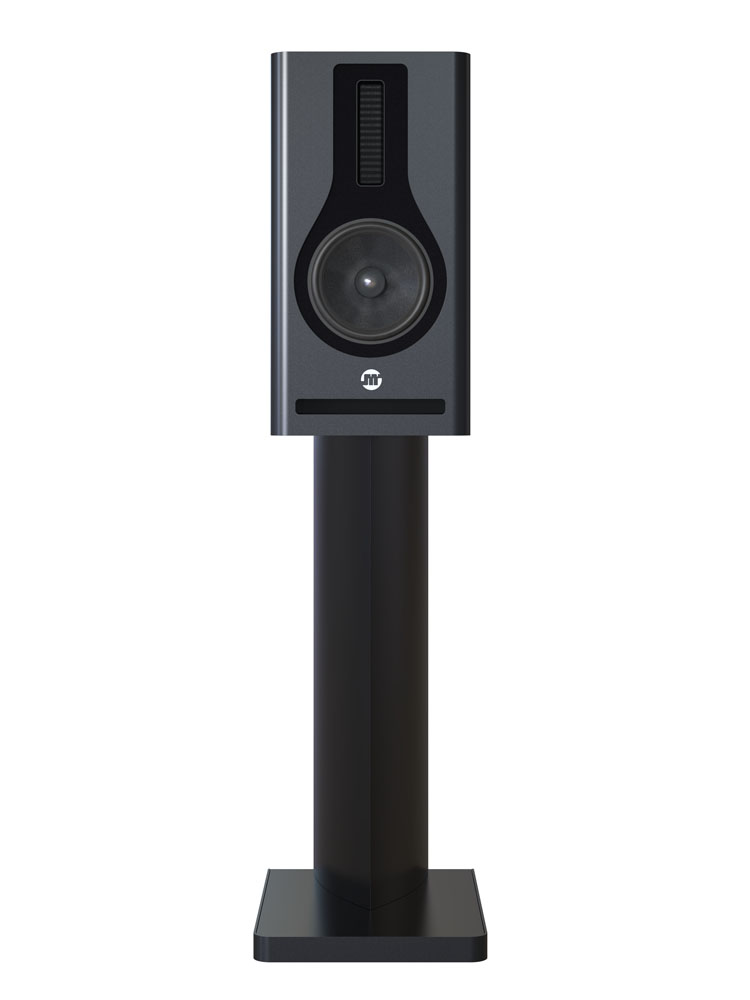
VOCEGRANDE
8 400 €
9 200 €
8 400 €
Agape is a stereophonic speaker, connected, designed and developed with the same high standards as our traditional high-fidelity speakers. We have therefore taken the same care in its design and manufacture in order to keep the sound philosophy, the degree of finishing and the aesthetics dear to JMR intact.
Finition

Blanc perle

Bleu nuit

Gris anthracite
This high-end passive loudspeaker brilliantly perpetuates the tradition dear to JMR to offer in a compact format, an extremely musical system with acoustic performances worthy of a column loudspeaker.
In 2015, for the first time, JMR presented its fabulous ADARA project, this system concentrated all our technological advances in an avant-garde, but very elitist concept. VOCEGRANDE uses many of the patented advances obtained, finally making them accessible to the greatest number.
PRICE GENERALLY OBSERVED 8400,00 € (THE PAIR)
FINITION:
White - Pearl - Midnight Blue– mother of pearl - Grey anthracite – Grey metal aluminium
POSER UNE QUESTION
DESCRIPTION
This high-end passive loudspeaker brilliantly perpetuates the tradition dear to JMR to offer in a compact format, an extremely musical system with acoustic performances worthy of a column loudspeaker.
Heir to a long line of exceptional loudspeakers, VOCEGRANDE in turn respects the music by its humility, its transparency, the immediate feeling that "the loudspeaker has physically disappeared" to make room only for the music. It weaves a close and very strong link between the listener and the performer thanks to the scrupulous respect of the instruments, their tessituras, their spaces of bloom. She creates around her a sound architecture of a disturbing reality, without ambivalence, without embellishment, without tension, devoid of any caricature.
The process of creating a loudspeaker is above all scientific and technical, often laborious, but sometimes, it is the occasion of a magic meeting... And it is the case with VOCEGRANDE.
Beyond its sophisticated technology and its very graphic appearance, it is the first time that an object touches me so much. Not only did my studies result in a remarkable design, but it was the research itself that brought this wood and metal sculpture to life... It was the laws of elementary acoustics that dictated its proportions, materials and unique posture.
It is often said that a creator gives life to the objects he conceives, with VOCEGRANDE, not only did I reveal a soul in it, but it was also able to give body to the impalpable.
VOCEGRANDE moved me from the first moments of its listening, it gives a very particular meaning to my obstinacy to advance always further in order to reach the heart of the music. While listening to it, I can't help but think of Claude Debussy's phrase: "Beauty must be sensitive, it must give us an immediate pleasure, it must impose itself or insinuate itself into us without us having to make any effort to grasp it."
VOCEGRANDE pays tribute to the work of those who, from generation to generation, have worked to bring JMR creations to life.
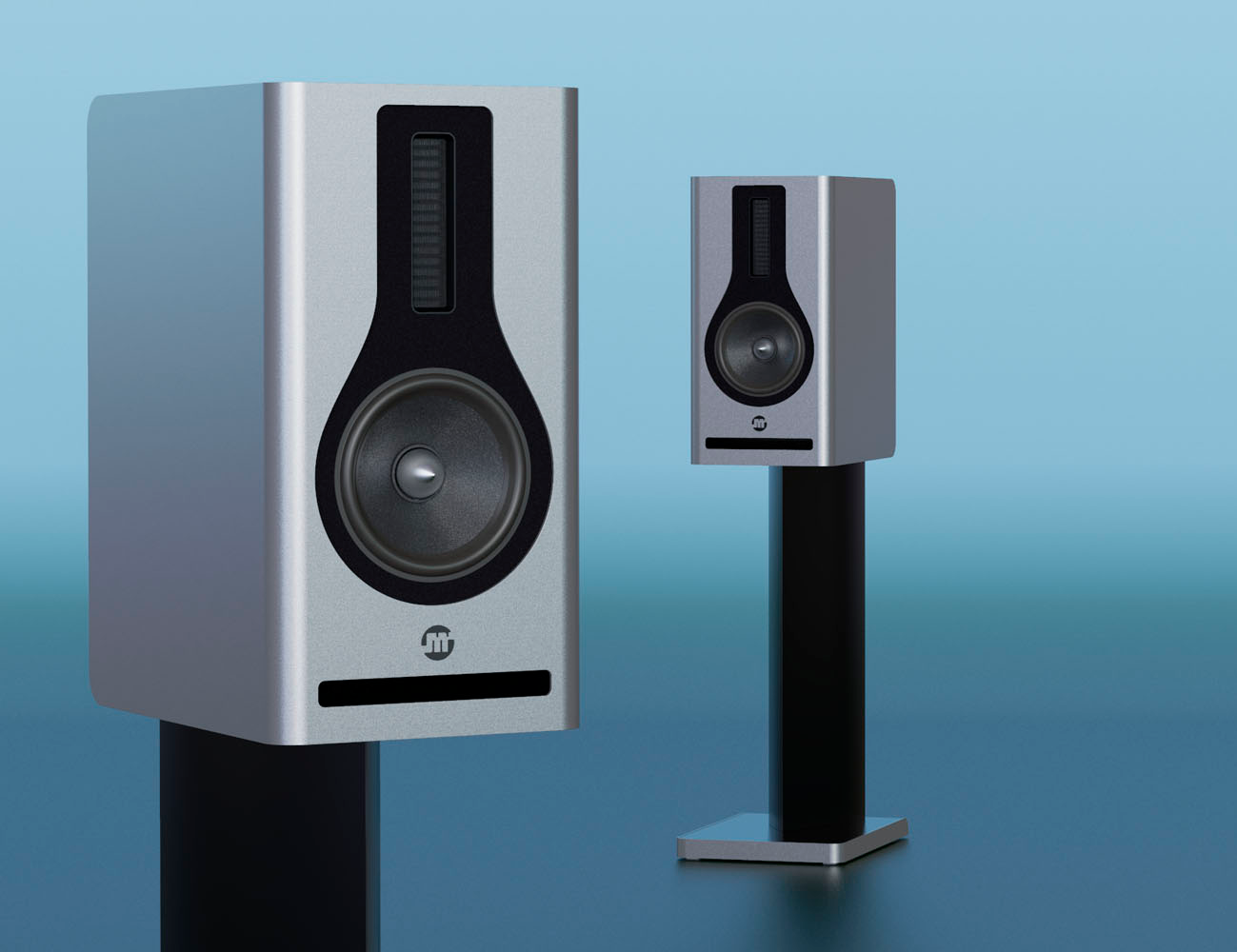



WOODWORKING:
– Foot not removable, because integrating the passive filter.
• Device limiting the phenomena of solidian transmission of the vibratory energy thanks to the use of materials of different density (MDF-Aluminium). Between these two materials is inserted a specific polymer fixed with a polyurethane glue having the particularity to keep a certain elasticity to better control the vibrations of the box.
• Complete mechanical decoupling of the enclosure base, allowing the use of Teflon pads as interfaces with the floor (no decoupling spikes).
• Proprietary charge consisting of 4 progressively damped cavities leading to a front laminar vent, this charge uses no sorbent, only some walls are lined with viscoelastic compound or bitumen. This load offers a very consistent and fast group propagation time for a very articulate, transparent and incredibly fast bass.
FILTERING:
2 ½ ways,
6 – 12/12 dB/octave. Cut-off frequencies at 300 and 2800 Hz. Carefully selected audiophile quality components.
LOUDSPEAKERS :
– Medium/tweeter AST (aerostriction) 120 mm long diaphragm (twice as long as the one usually used in the ABSCISSE Jubilé and the ORFEO Jubilé) allowing a low cutoff frequency of 12 dB/octave at 1.2 kHz (this transducer alone covers the entire sensitivity range of the ear up to 30 kHz) This diaphragm is made of an extremely light avionic aluminum coating on a pleated silicone support with a Greek line and surrounded by two neodymium bars exerting a very strong magnetic field. Unlike a traditional ribbon that pushes the air in front of it, the AST pinches the air between its folds, so it is much faster and much less fragile. Extremely powerful, it has outstanding dynamic characteristics and an extremely low distortion rate. The absence of natural resonance of the material used gives this exceptional (wide band) tweeter qualities of transparency, harmonic gradation and exceptional transient.
BOOMER :
– Boomer 180 mm, cone made of 7 layers of carbon and peek (Polyetheretherketone) its surface is then subjected to a plasma treatment giving it a rough aspect. It has in the center of its 38 mm spool on a fiberglass support (light and rigid) an anti-whirling ogive turned in the mass in aluminum. Its speeder is airy with a progressive profile. This boomer has an aluminum bowl, a double ferrite magnet with slow magnetization. Its linear displacement is very important and it has a very great power handling, giving it a fast bass, descending very low and always very articulated with frank feelings of impact.
FILTERING:
• Two-way passive filter 12 dB/octave centered at 1.2 kHz using very high quality passive components (silver armature capacitors and HP1132 silver/copper cable termination, air coil in deoxygenated pure copper strip of great width; specific wound resistors covered with a copper tube acting as a heat sink and Faraday cage connected to the system ground) Filter assembled by hand on anti-vibration support and placed outside any electromagnetic field. Sorted and matched components with a tolerance of 1%. Components directly soldered to each other and fully wired internally using our HP1132 silver/copper cable with double the cross-section.
| Impedance | 8 ohms (min 6.8 ohms) |
|---|---|
| Frequency response | 38hz-30khz |
| Allowable power | 100 Watts |
| Peak power | 200 Watts |
| Power of use | 40 to 180 Watts |
| Sensibility | 88.5 db/W/m (2,83V) |
| Distorsion | less than 2% (200hz at 10khz at 85db) |
| Type of filtering | 12/12db/Octave to 1200hz |
| Connection | Single-wire + 3rd terminal grounding passive filter |
| Dimensions | H: 110cm - L: 28cm - P: 39cm |
| Weight | 38 Kg |
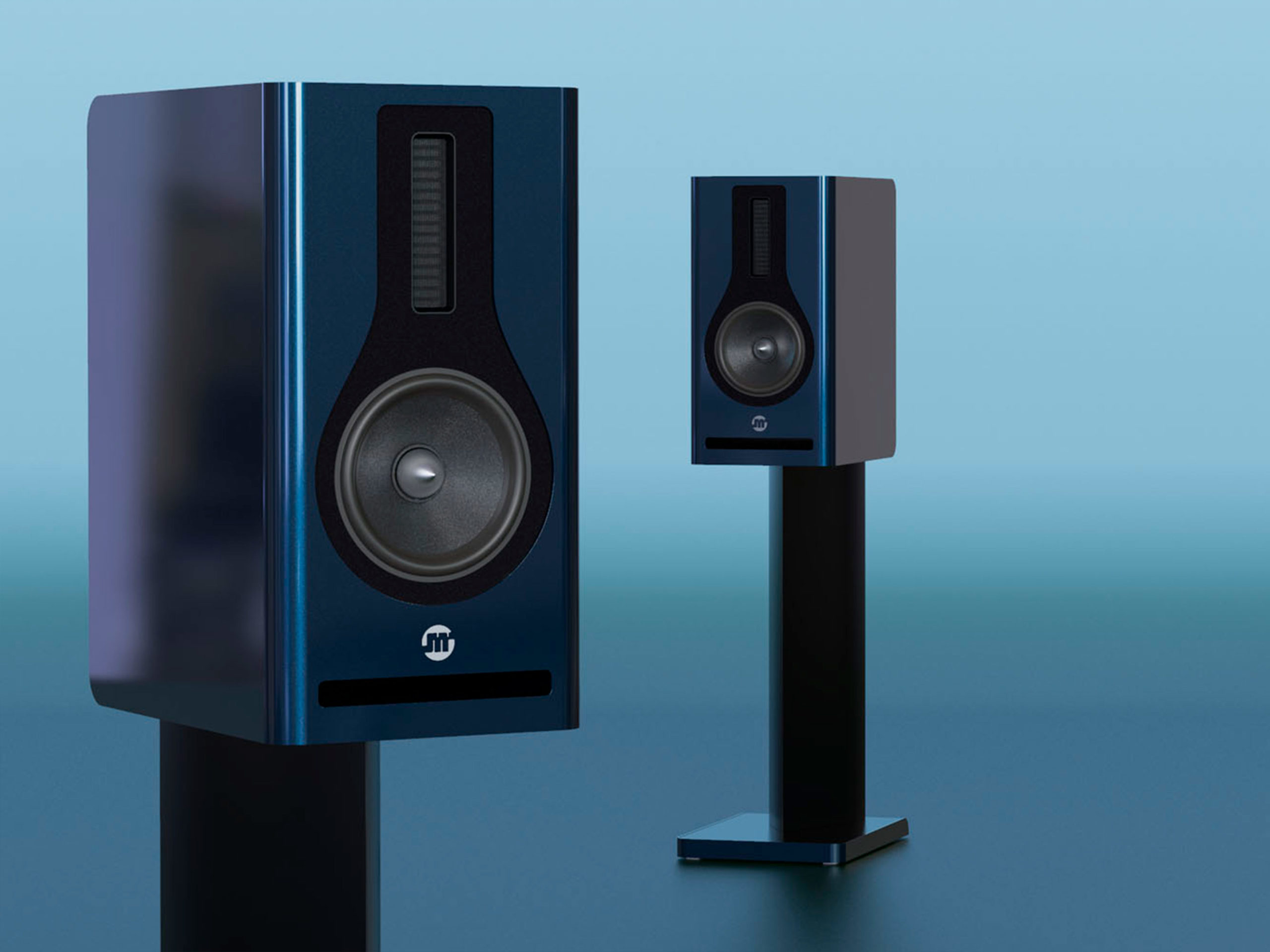
Nothing found.
AGAPE
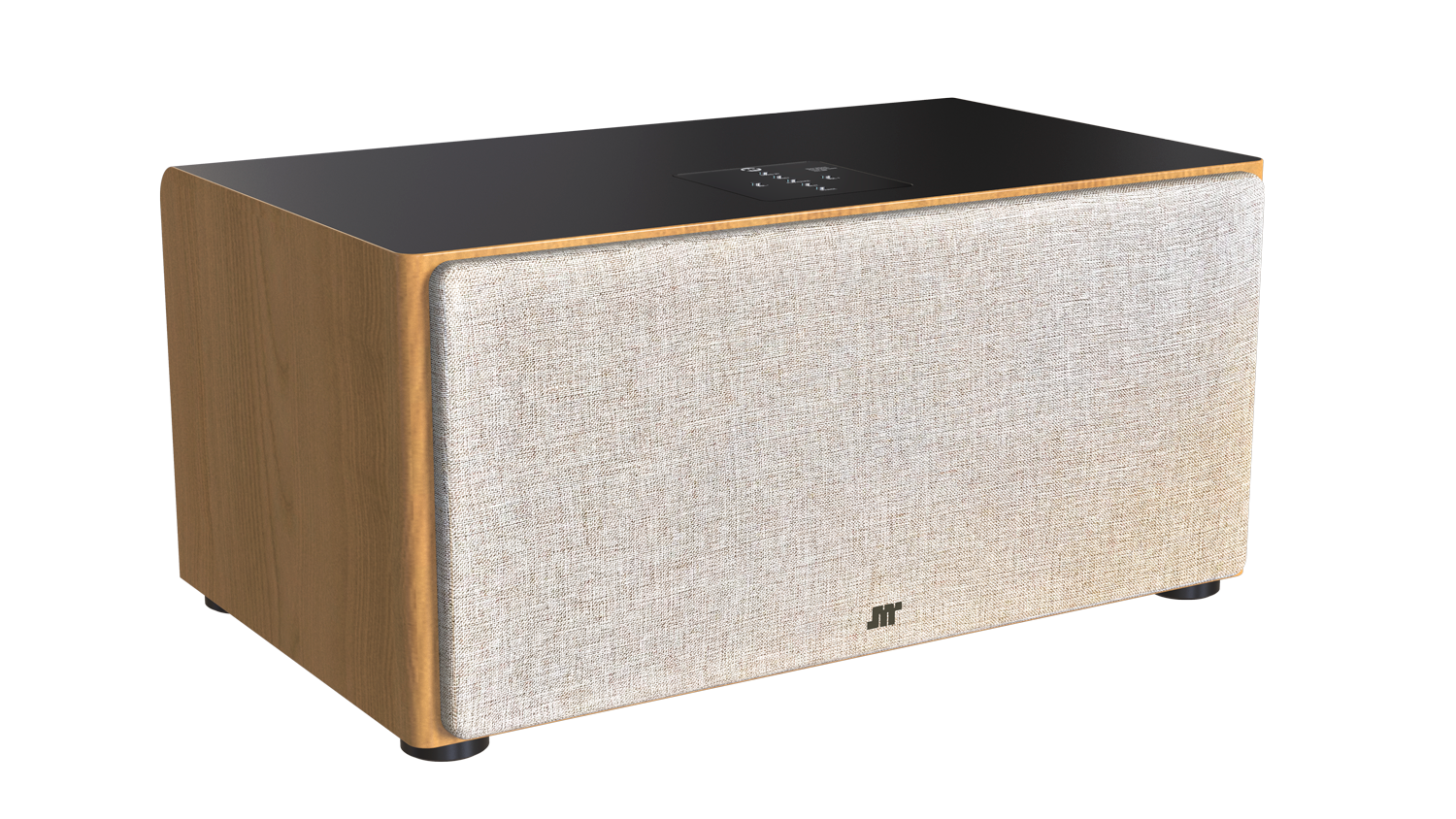

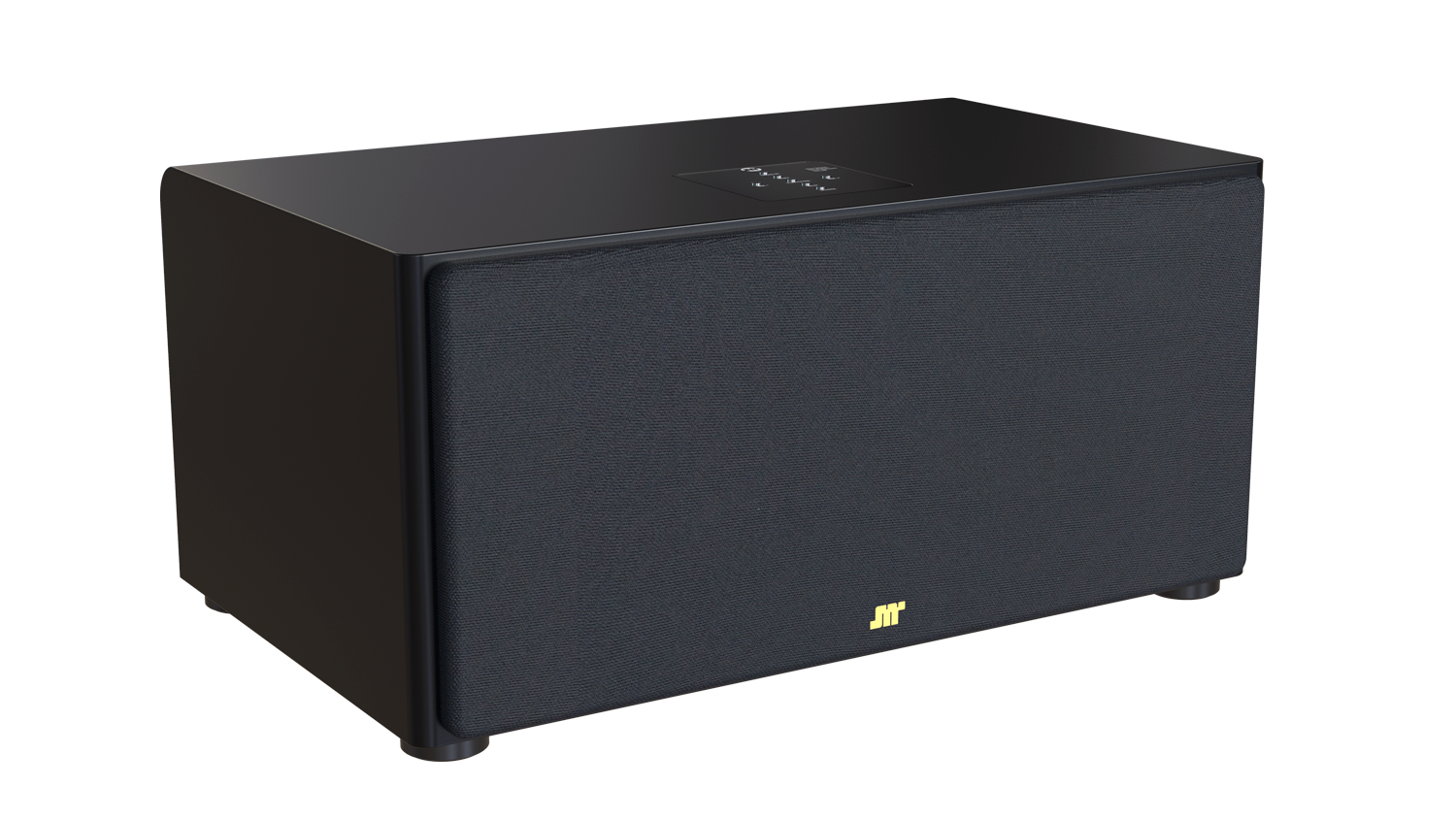
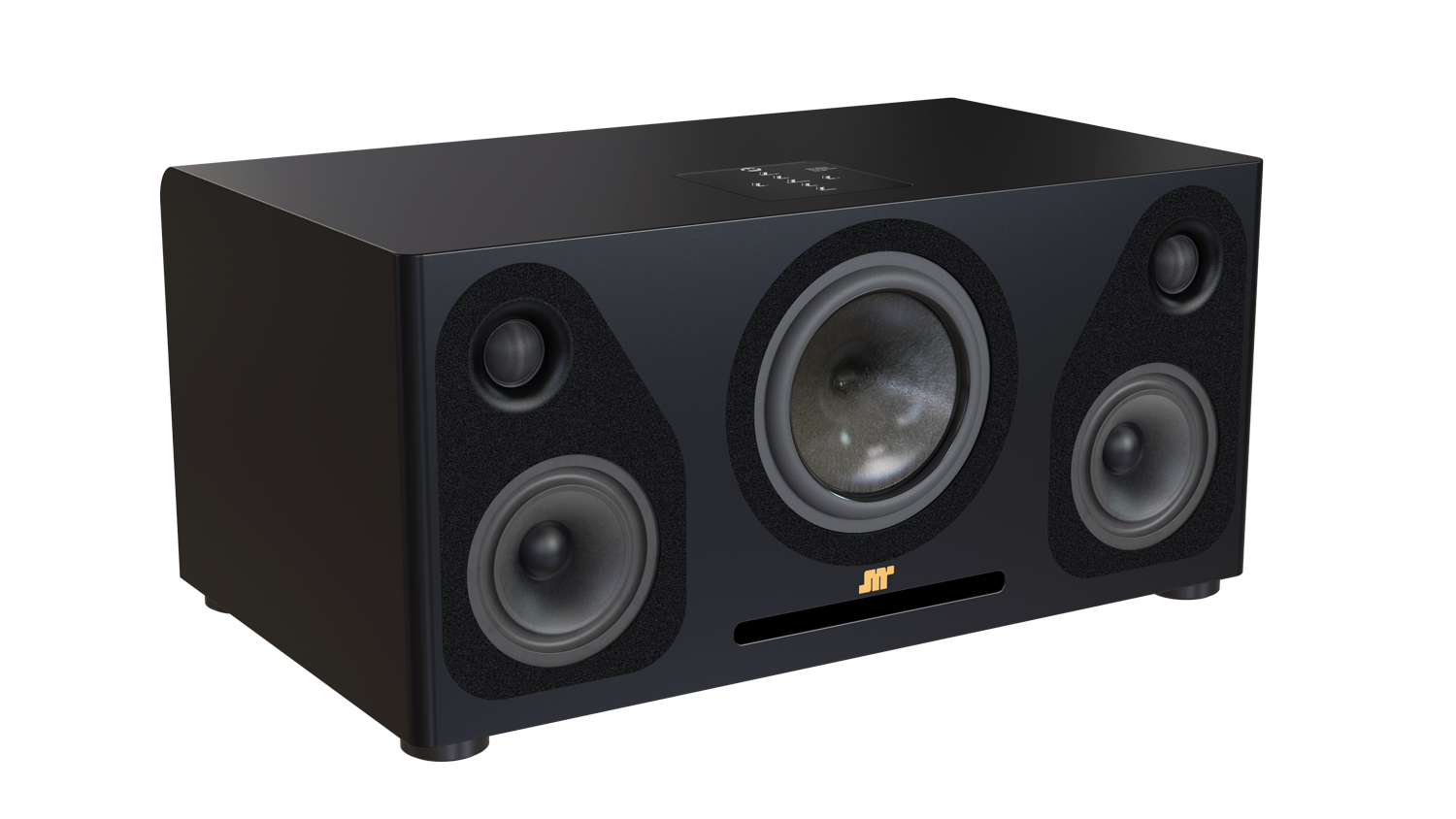
AGAPE
1 650 €
1 650 €
Agape is a stereophonic speaker, connected, designed and developed with the same high standards as our traditional high-fidelity speakers. We have therefore taken the same care in its design and manufacture in order to keep the sound philosophy, the degree of finishing and the aesthetics dear to JMR intact.
Finition

bois

Noir satiné
The bass-reflex load has a front laminar port for the woofer. The internal volume is made up of five distinct acoustic cavities, one for each speaker, even for the tweeters. The electronic part is located in a separate closed cavity to avoid any electromagnetic and acoustic disturbance coming from the speakers.
A 140 mm boomer: finished cone (not pierced by the coil) with a Gaussian profile, with a pressed carbon sandwich structure (non-woven) with a liquid crystal fiber core, the same as the one used for the Abscisse Jubilé. It has a 38 mm coil on a ventilated aluminum support. Its suspension is made of rubber/foam treated on a portion of its surface in contact with the cone by an absorbent material. Its long coil allows long excursions without distortion and a very strong power handling. Its bowl is made of aluminum with flat speeder ventilation.
- Two 100 mm midrange drivers: audiophile quality paper cone driven by a 25 mm coil on an aluminum stand. Its bowl is also made of aluminum. They have a double ferrite magnet with slow magnetization. Their soft core cover is made of polypropylene. • Two 28mm synthetic silk textile dome tweeters with a neodymium magnet and a closed rear tuned cavity. Their horns are made of ABS and have an optimized profile for a better control of their directivity.
All Agape speakers are the result of our latest research and are of truly audiophile quality. The filtering is hybrid associating a passive circuit and a DSP. It is passive between the tweeters and midrange with a 12 dB/octave slope at 2,800 Hz using high quality, hand-assembled components.
The digital DSP filtering allows the connection between the midrange and the bass with a slope of 24 dB/octave at 200 Hz and ensures an optimum transition without intermodulation.
The amplifier modules use Class D technology and provide 2 x 65 W for the midrange/treble section and 1 x 125 W for the bass in mono.
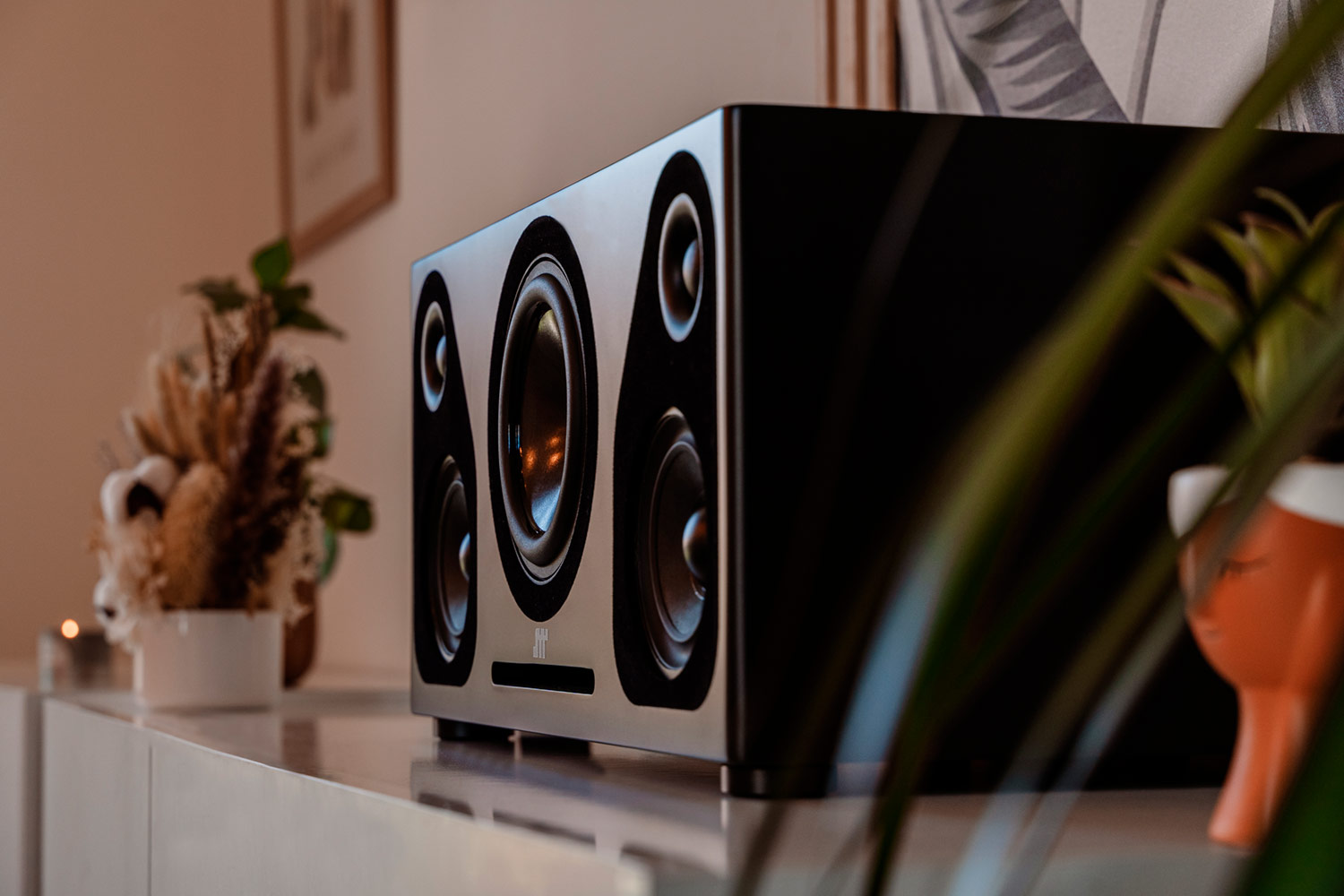
WOODWORKING:
It is made of 19 mm MDF, its architecture allows each speaker to have its own optimized and separate load, in all there are 5 distinct acoustic cavities. A sixth cavity is in charge of housing all the electronic part isolated from all the magnetic and vibratory disturbances emanating from the speakers. The bass-reflex load of the 14 cm diameter woofer is finely tuned, which allows a very wide bandwidth in the low frequencies (55 hz at -3db). This load leads to a laminar vent on the front of the cabinet to facilitate the placement of AGAPE. The bass is tense, very well modulated, without bloat or redundancy. Its cabinetry rests on black ABS legs that rest on foam discs to avoid any parasitic vibration.
FILTERING:
The filtering is hybrid associating a passive circuit and a DSP. It is passive between the tweeters and midrange with a 12 dB/octave slope at 2,800 Hz, using high-quality, hand-assembled components. The digital DSP filtering allows the connection between the midrange and the bass with a slope of 24 dB/octave at 200 Hz and ensures an optimum transition without intermodulation.
LOUDSPEAKERS :
• A 140 mm boomer: finished cone (not pierced by the coil) with a Gaussian profile, with a pressed carbon sandwich structure (non-woven) with a liquid crystal fiber core, the same as the one used for the Abscisse Jubilé. It has a 38 mm coil on a ventilated aluminum support. Its suspension is made of rubber/foam treated on a portion of its surface in contact with the cone by an absorbent material. Its long coil allows long excursions without distortion and a very strong power handling. Its bowl is made of aluminum with ventilation of its flat speeder.
– Two 100 mm midrange drivers: audiophile quality paper cone driven by a 25 mm coil on an aluminum stand. Its bowl is also made of aluminum. They have a large diameter, high power, slow-magnetizing ferrite magnet. Their soft core cover is made of polypropylene.
• Two 28mm synthetic silk textile dome tweeters with a neodymium magnet and a closed rear tuned cavity. Their horns are made of ABS and have an optimized profile for a better control of their directivity.
All AGAPE speakers are the result of our latest research and are of truly audiophile quality.
AMPLIFICATION :
Class D modules with a cumulative power of 255W (2 × 65W for the midrange/treble and 125W for the bass in mono) largely sufficient to feed a room of reasonable size with a realistic sound level.
FILTERING:
• Two-way passive filter 12db/octave centered at 1.2khz using very high quality passive components (silver armature capacitors and HP1132 silver/copper cable termination, air coil in deoxygenated pure copper strip of great width; specific wound resistors covered with a copper tube acting as a heat sink and Faraday cage connected to the system ground) Filter assembled by hand on anti-vibration support and placed outside any electromagnetic field. Sorted and matched component with a tolerance of 1%. Directly soldered components and fully wired internal connection using our silver/copper HP1132 cable with doubled cross section
| Conception | 3 ways |
|---|---|
| loudspeakers | 5 Outputs |
| Restitution | stereo |
| Peak power | 200 Watts |
| Total power | 255 W |
| Connectivity | AirPlay and Bluetooth |
| Streaming services | Qobuz, Tidal, Spotify Connect, Deezer, etc... |
| Multi-room | up to 8 AGAPÉ |
| UPNP/DLNA | until 24bits /192 KHz |
| Inputs | analog and digital |
| Keyboard control | physical on the upper side (sleep, volume, track change, play/pause, source selection plus access to DSP functions by long press on some buttons |
| Application | 4STREAM free download for IOS and Android |
| DSP | 4 configurations according to position |
| Dimensions | (LxHxP) : 480 x 230 x 280 mm |
| Weight | 18 kg |
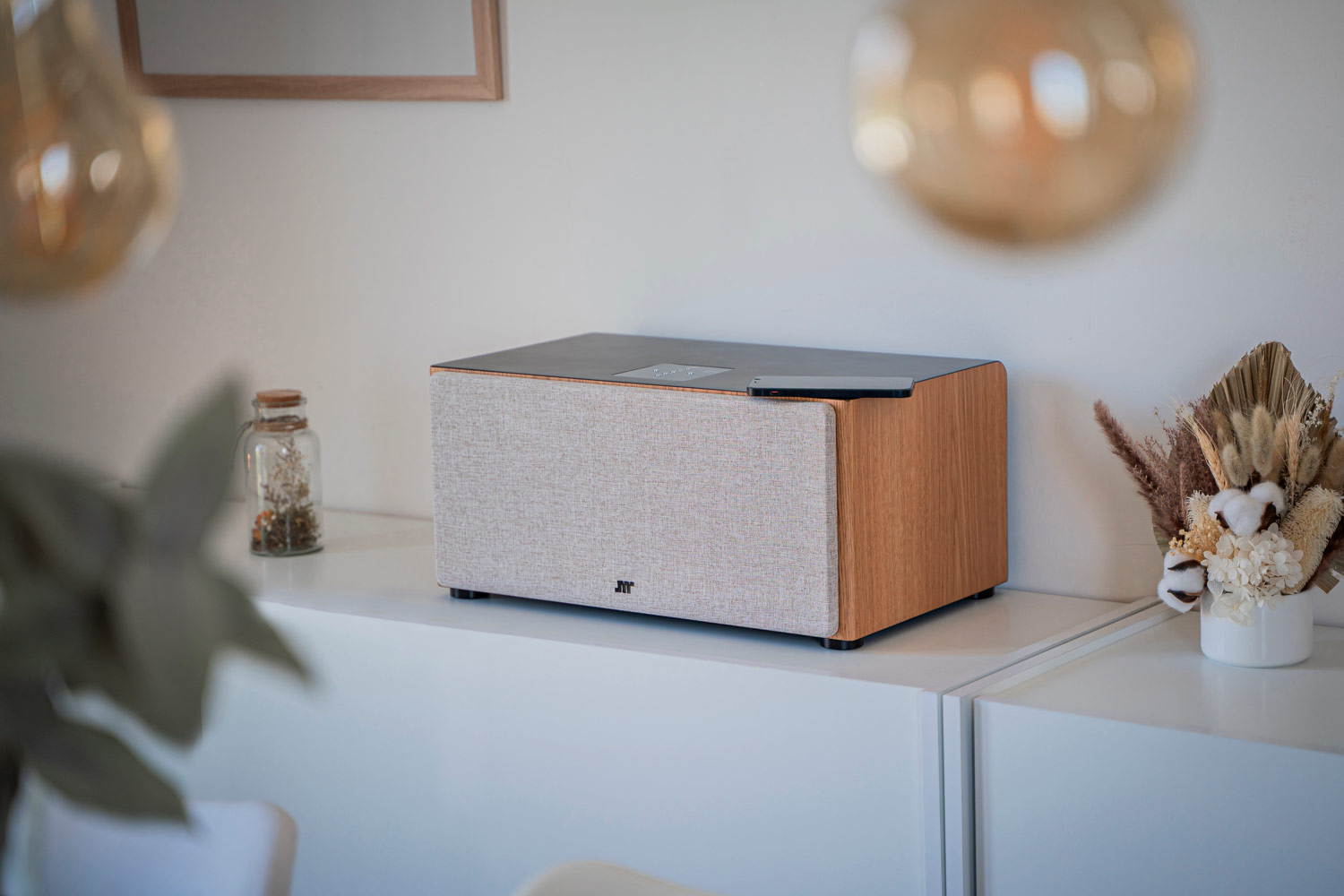
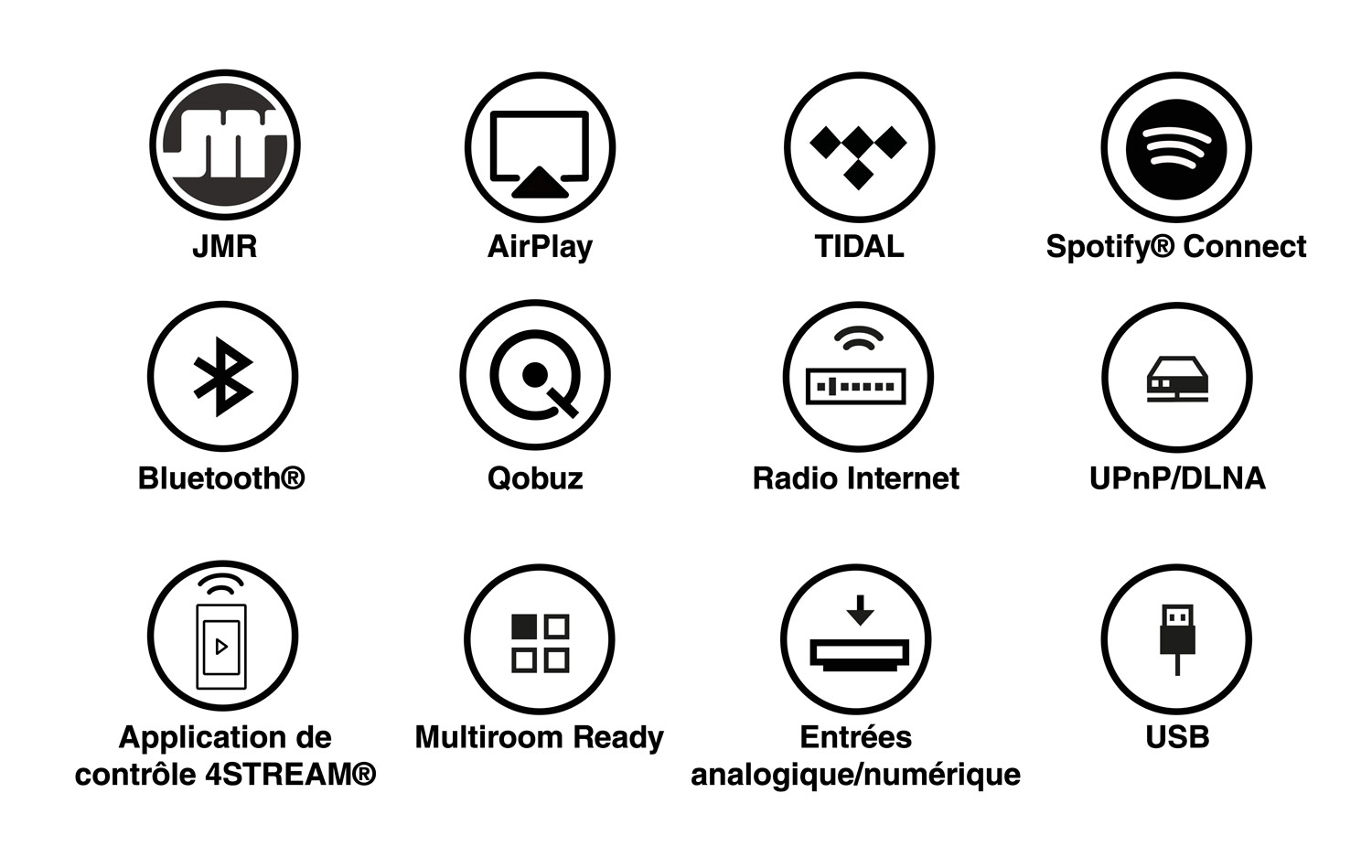
Nothing found.
MAGICSTAND II
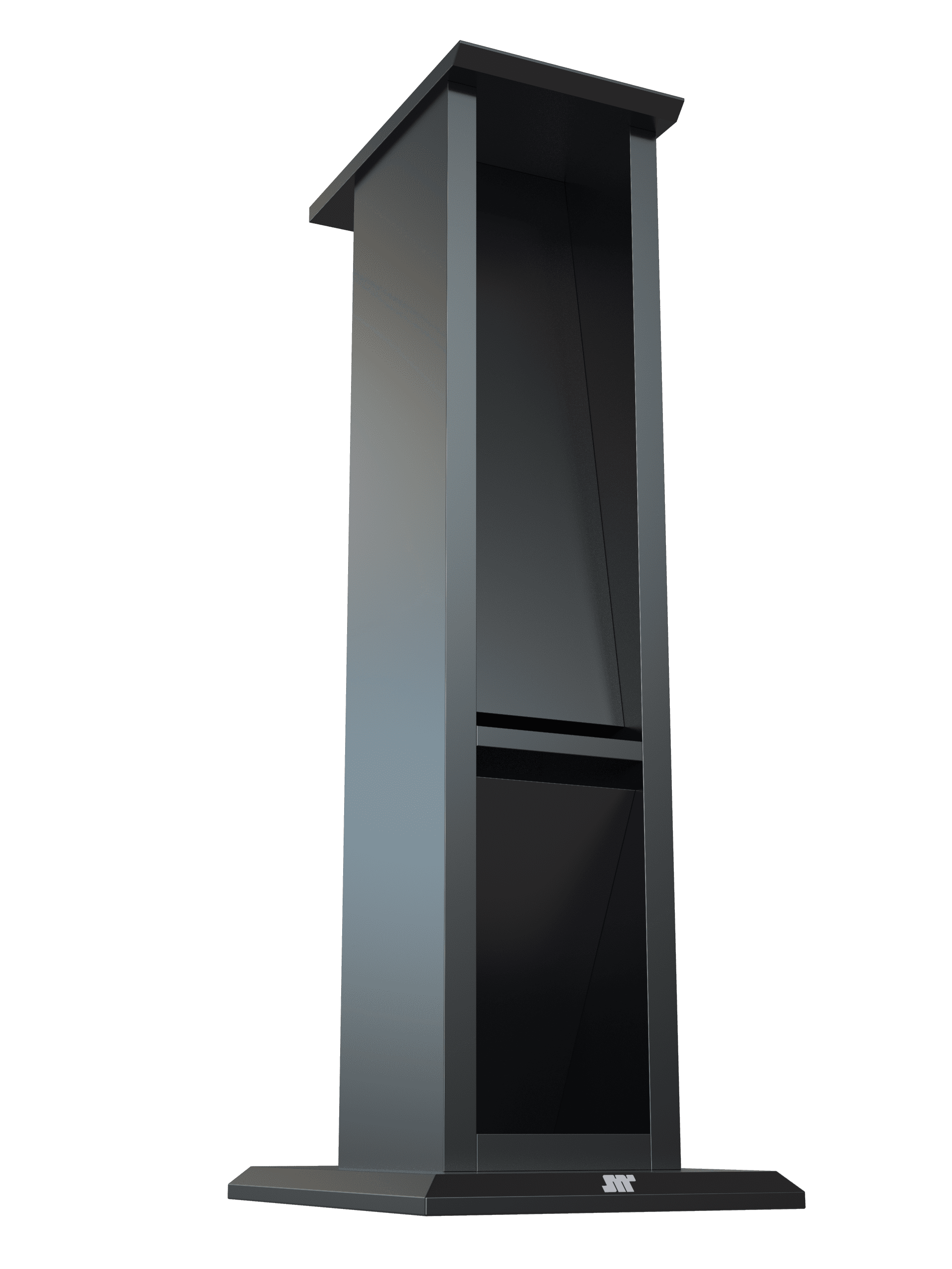
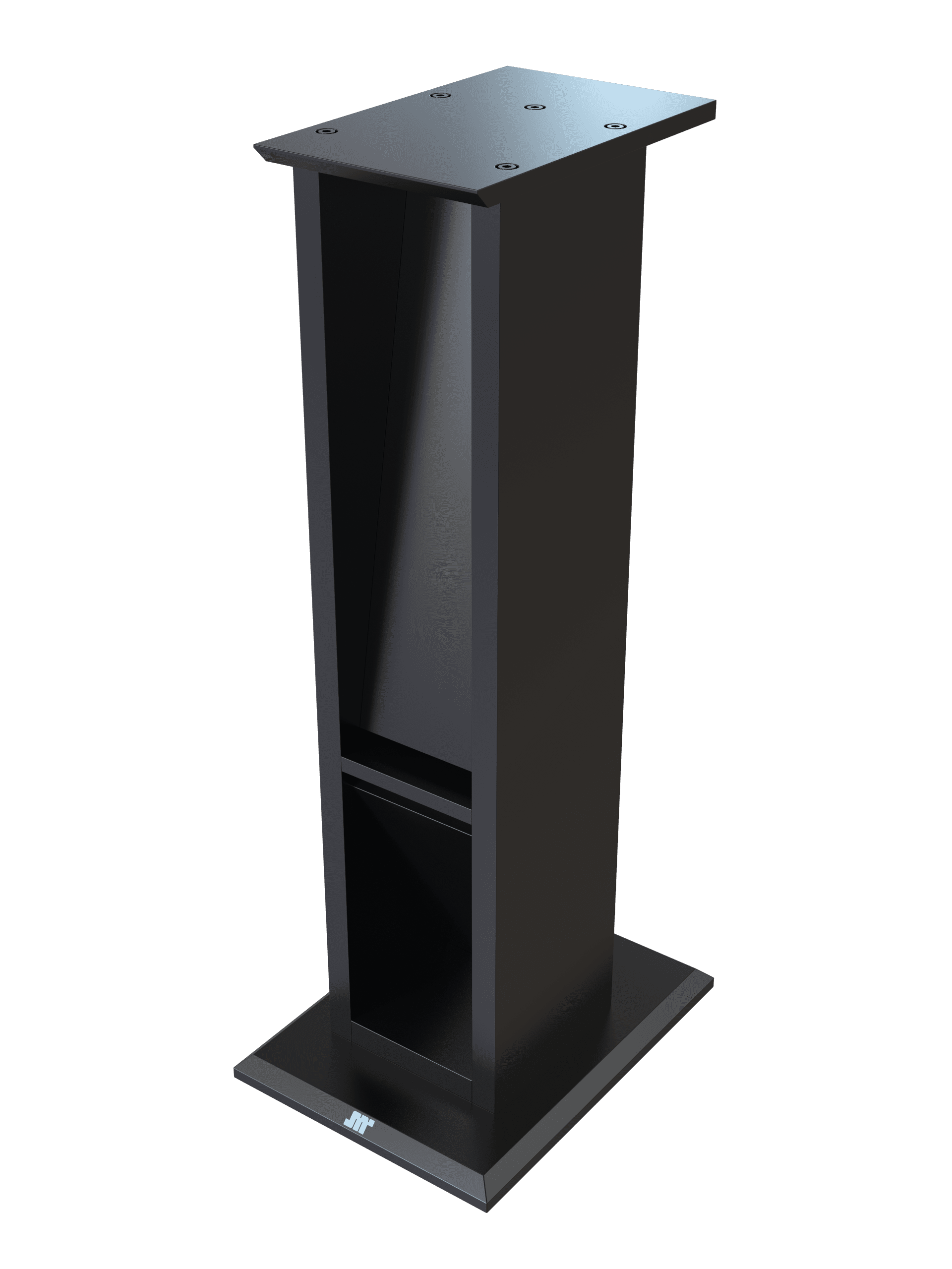
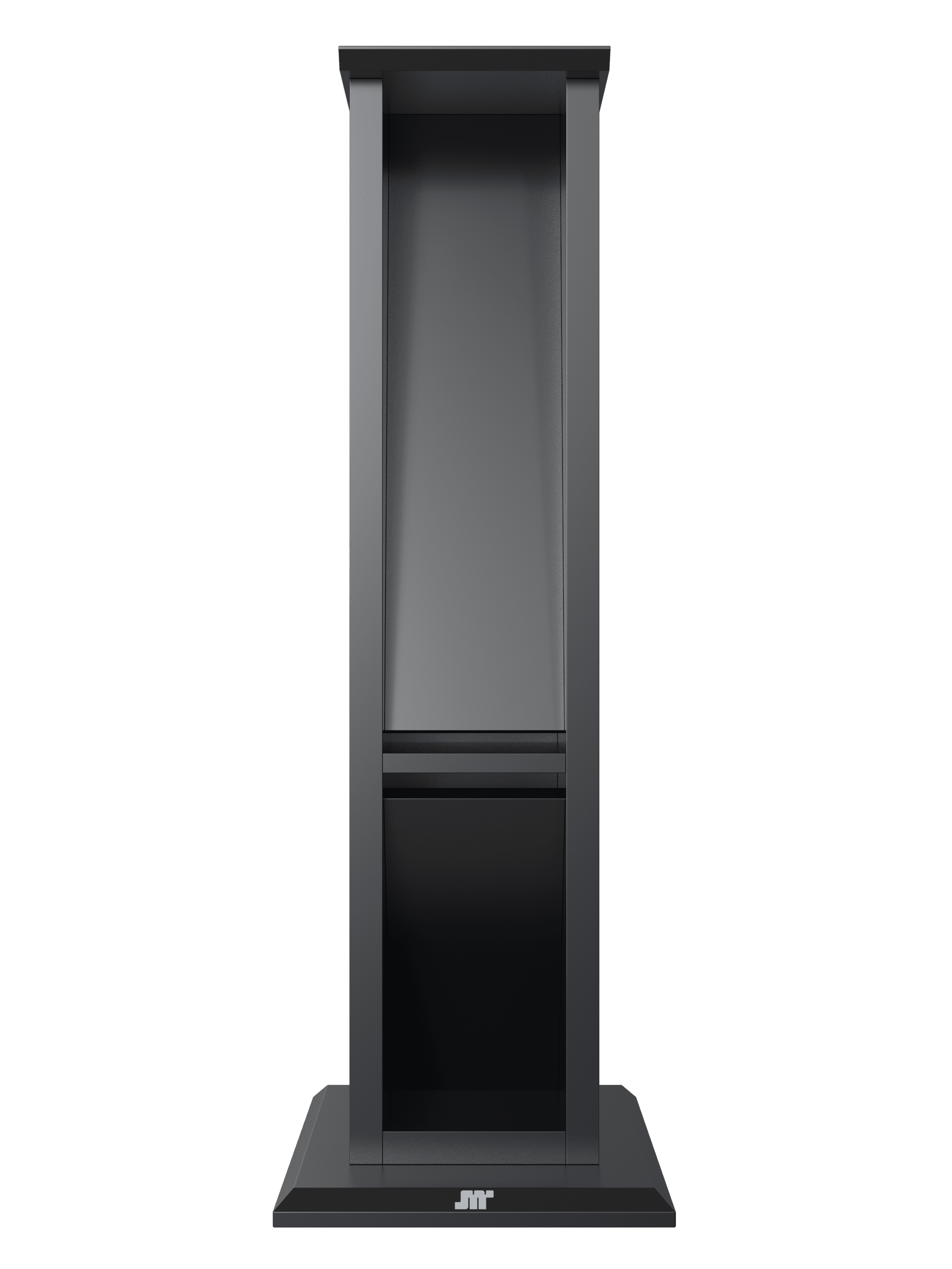

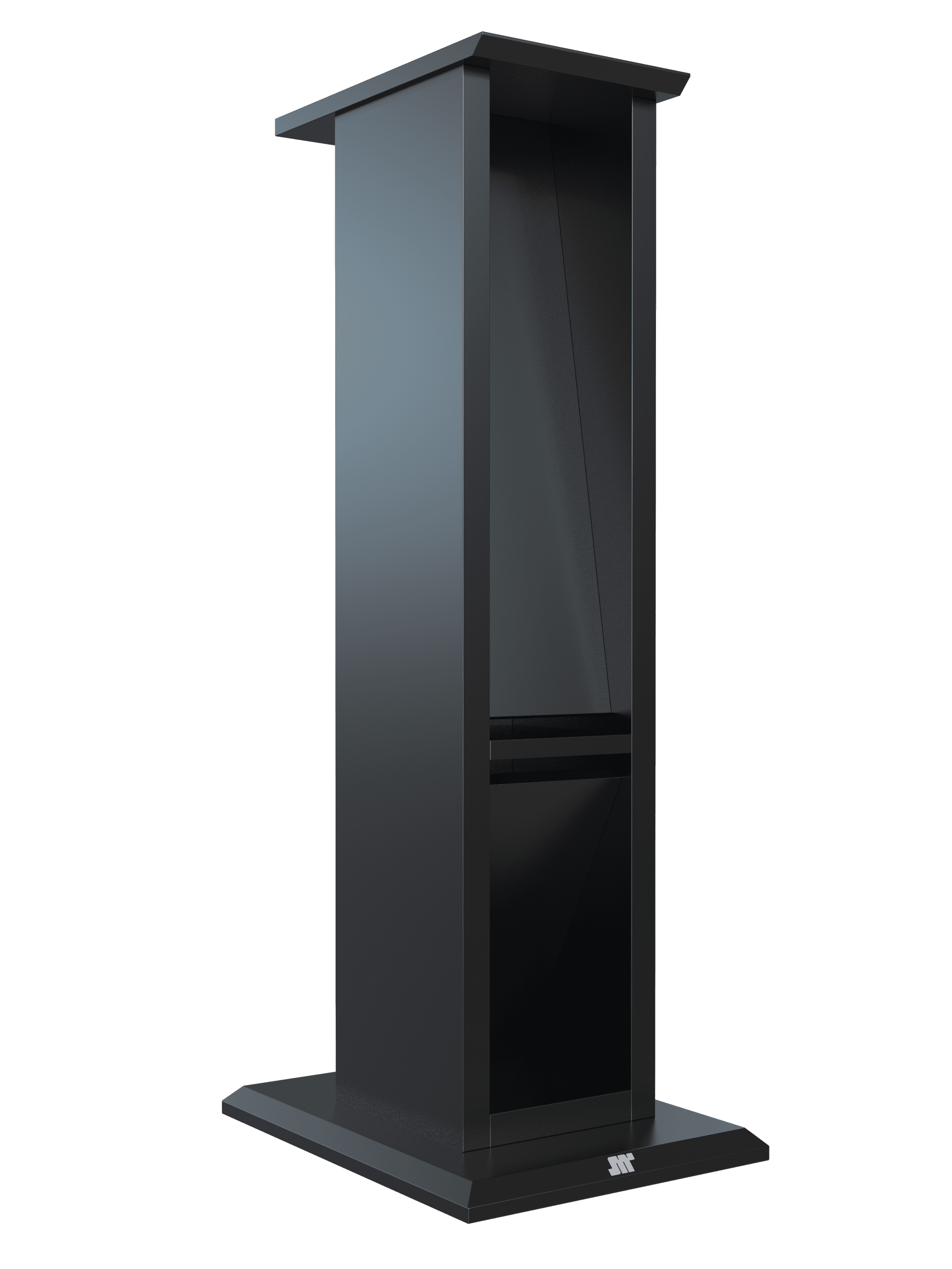
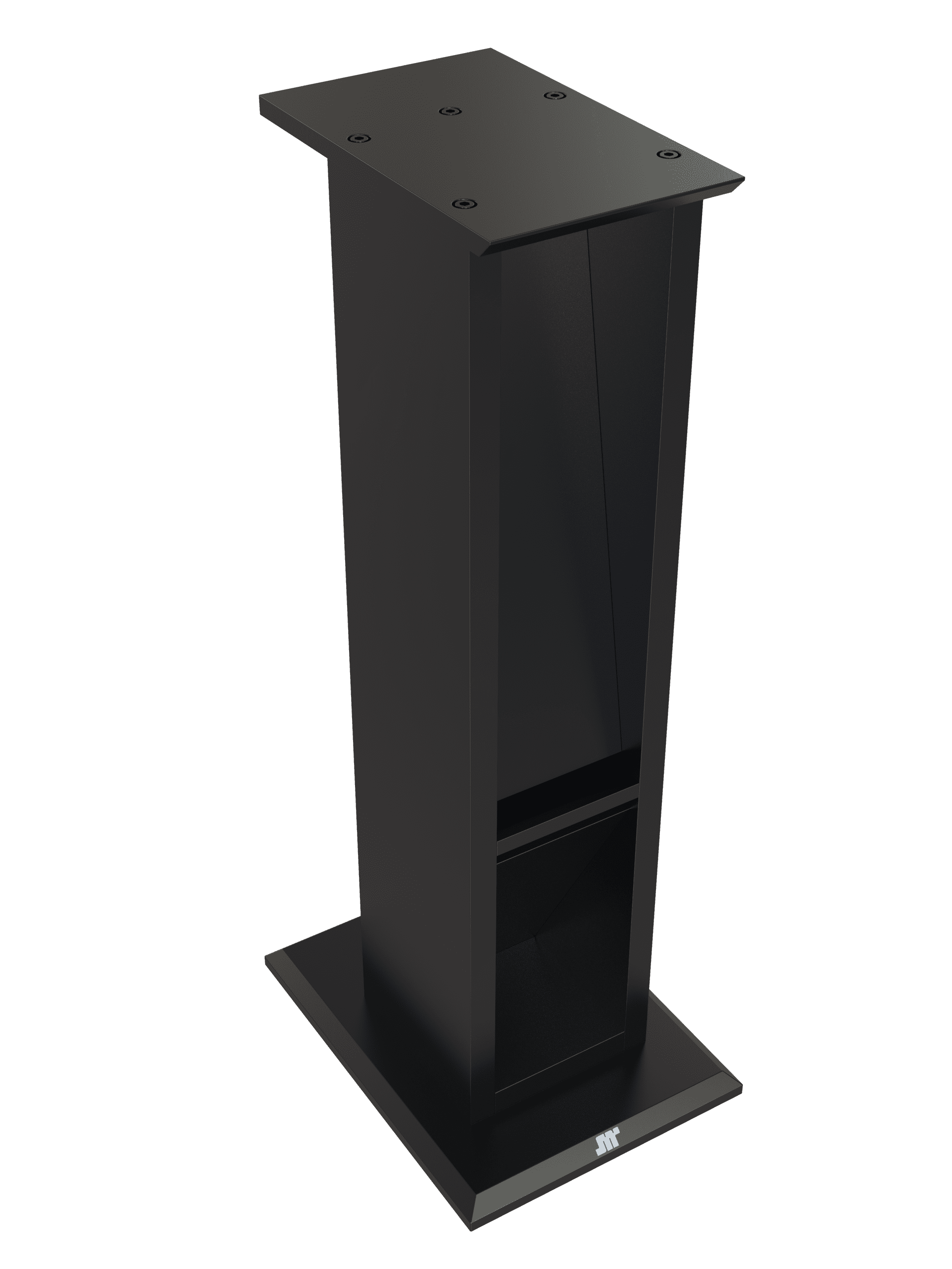
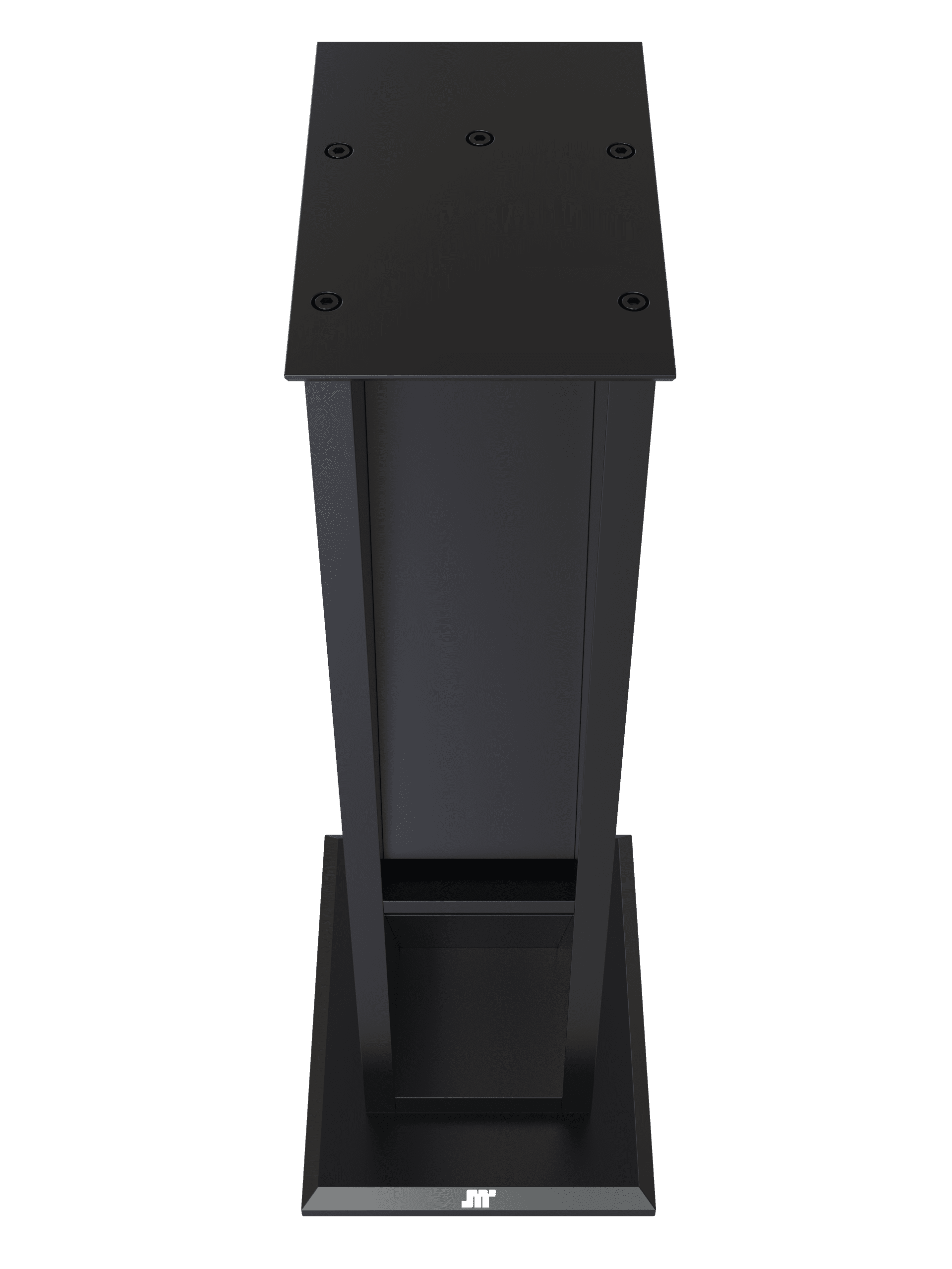

MAGICSTAND II
The importance of quality support for small loudspeakers has long been recognised and many specialist manufacturers now offer special stands whose inertia, weight, structure and various decoupling techniques from the floor dramatically improve the performance of the loudspeakers they support.
Nevertheless, there are still defects, the main one being the establishment of standing waves between the floor and the top plate of the stand or the base of the loudspeaker, which causes notable accidents in the frequency response and the phase response. MAGIC STAND II® uses a unique active system that involves two frequency-shifted resonators and angled surfaces so that the signal is optimally diffracted at low frequencies (100-400 Hz band).
The results are spectacular, and they are not only audible but also measurable, as shown by the response curves published below and taken in pink noise analysis with the same speaker.
The speaker was placed on a remarkably heavy and inert sandblasted metal stand (see lower curve) and on a Magic-stand (upper curve). The heights were obviously the same for the speakers and the measuring microphone was located in exactly the same place.
FINDINGS :
The frequency response with the metal stand is within 8 dB. With Magic-stand it is within 4 dB The level at 50 Hz compared to the reference level is -6dB with the metal stand, it is only -3dB with MAGIC STAND II
NB = this stand gives optimal results with speaker heights between 30 and 50 cm.
| Weight | 8 kg |
|---|---|
| Overall height | 75 cm |
| Width/depth of the column | 15 cm |
| Base dimensions | W 23 D 30 cm |
| Support tray | W 15 D 25 cm |

CABLE HP1132

CABLE HP1132
Developed in its basic configuration for aerospace applications where extreme performance is required, this link cable is capable of carrying microwave frequencies, which makes it particularly efficient in the audio band due to its perfect group propagation time.
The optimization of its section for its application to the audio domain and its composite structure make it, despite a size that some may consider small, one of the best existing to date.
Its extremely tight manufacturing tolerances, the perfect quality of its components and their anti-oxidation treatment make it absolutely reliable over time.
The comparison with the best existing copper cables reveals a higher subjective linearity, a deeper extreme bass and an extremely natural treble. Finally, its drawing technique and its very low linear resistance do not impose any direction of use or equal lengths for the two stereophonic channels.
Developed in its basic configuration for aerospace applications where extreme performance is required, this cable link is capable of carrying microwave frequencies, making it particularly effective in the audio band.
ADVICE FOR USE
The spiral shield should be connected to the amplifier chassis
ABOUT OUR SPEAKER AND MODULATION CABLES
Why silver/copper?
A metal consists of crystals joined together by a more or less conductive oxide, the dielectric.
The resistivity of copper is very little different from that of silver and does not in theory justify a marked qualitative difference.
On closer inspection, silver oxide has the obvious distinction of being a better electrical conductor than copper oxide, which explains the better results of silver cable.
It also turns out that the influence of the dielectric is only really noticeable at high frequencies.
It is well known that the more the frequency increases, the more the electrons propagate through the periphery of the conductor.
We therefore chose a copper core (LCOFC and anti-oxidation treated) covered with a silver plating (also LCOFC and anti-oxidation treated) allowing remarkable results at a still reasonable cost.
To increase the silver conducting surface, a configuration of 19 strands of 0.30 twisted was chosen in order to best control the capacitive problems of the conductors, which are perfectly stable in terms of their molecular structure due to the treatments mentioned above (this cable retains its properties from -90° to +150°C).
Why Teflon?
Any electrical transmission through a cable generates resonances within the cable (who hasn’t heard the EDF cables “singing”?) which are naturally transmitted to its periphery.
As high frequencies are carried by the periphery of the cable, the resonance of the conductor will be particularly disturbing for them.
Teflon is a material with a very high stiffness and a strong power of vibration absorption even in weak thickness, its other characteristic is to be able to adhere perfectly to a metal (Cf the stoves…) to which it binds intimately, it is in that very superior to the flexible or hard PVC usually used (it is also much more expensive..). To check this, strip a PVC-coated cable and a Teflon-coated cable, the former poses no difficulty, the latter, more problematic, shows its stronger adhesion.
Why Kapton?
It is a perfect insulator, stable, which dissipates high temperatures without deforming (see the supports of the moving coils of certain loudspeakers), associated with a helical shielding, also silver/copper (100% coverage), which protects the signals carried by the cable from any external magnetic radiation (see the CE standard).
Why a cross section of 1.77 mm²?
In high fidelity and more generally in low frequency, only weak currents are carried, so a large section has no real justification (20 volts under 8 ohms represent a power of 50 watts). The only thing that counts is the linear resistance, which depends directly on the quality of the metals (pure or impure metals)
Due to the deoxygenation of our cable and the quality of its metals (99.5% pure copper and silver) its linear resistance is only 8 ohms/Kilometer.
For an installed length of 10 metres the damping factor of the amplifier is therefore always higher than 33 for a seen impedance of 4 ohms, which is ideal.
NB: Have you thought about the cross-section of the output leads of the capacitors, the cross-section of the chokes usually used and the cross-section of the voice coils of the loudspeakers?
How can we simply verify what we are saying?
If you are soldering a current copper cable, the heat dissipation (i.e. conduction) is relatively low and you can heat it without burning your fingers near the heating point for some time.
If you have the same experience with our cable, under the same conditions, the heat is immediately intolerable and you have to hold the conductor with clamps to avoid burning yourself.

Magic CD
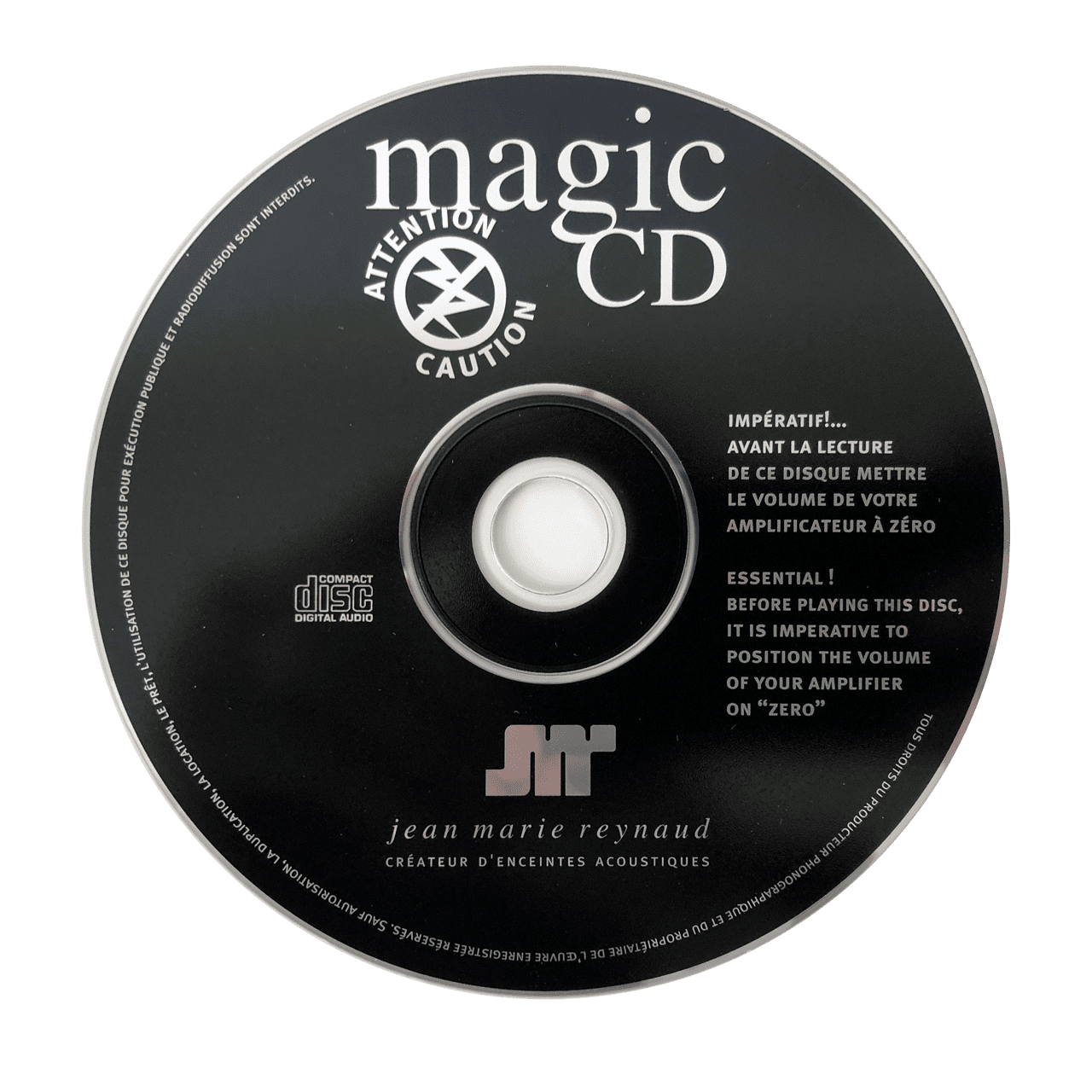
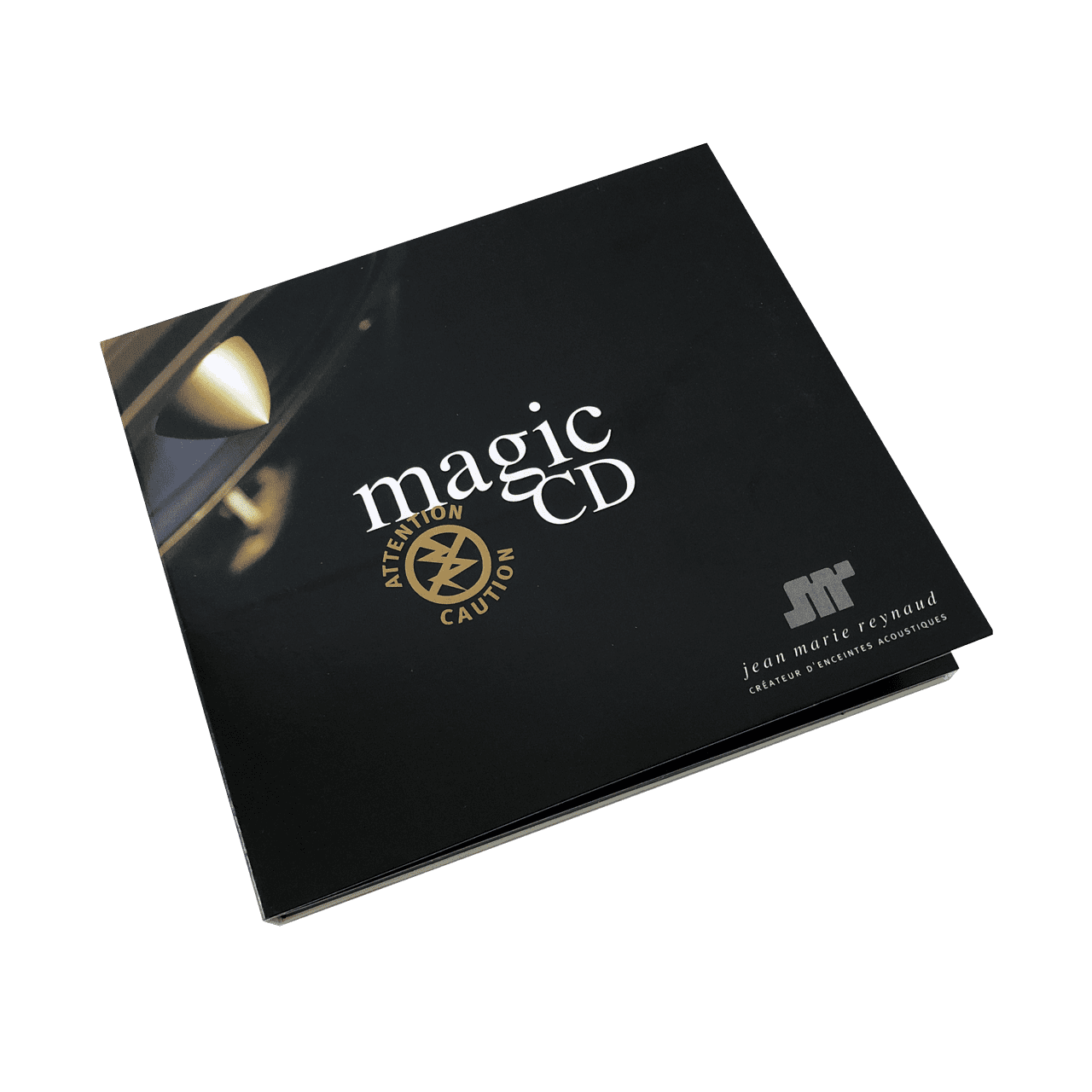
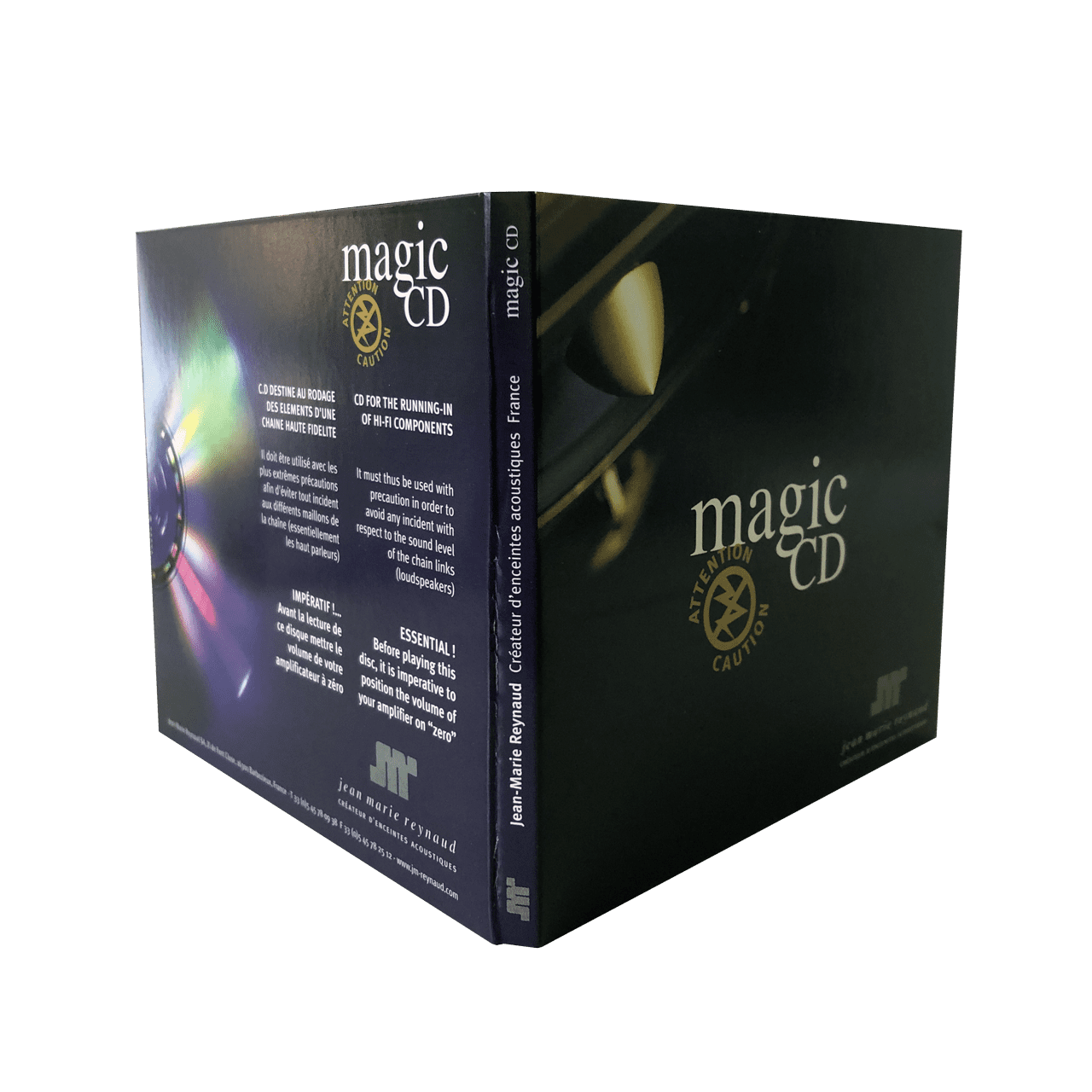
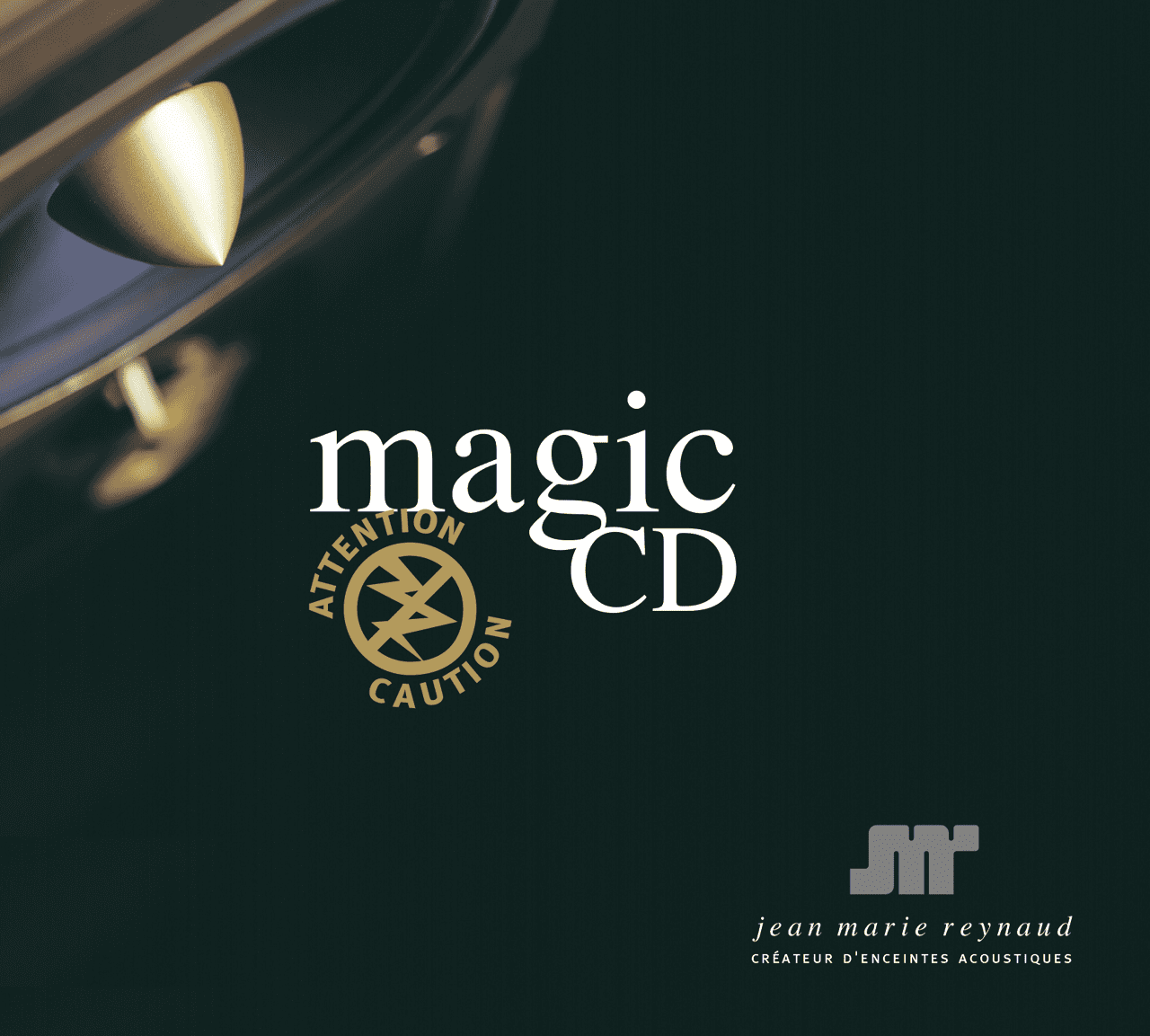
MAGIC CD
CD designed to accelerate and intensify the burn-in of speakers and certain electronic devices. Jean Marie Reynaud first developed these signals for his own needs, in order to achieve more rapid stabilisation of the characteristics of the loudspeaker equipment.
Subsequently, he offered this recording to his dealer network, giving them the means for a faster and more thorough break-in of the speakers offered for listening, and finally decided to make it available to individuals, for their own needs.
Ce CD contient des signaux conçus pour accélérer et intensifier le fonctionnement des enceintes et des composants de votre système HiFi, leur permettant d'atteindre plus rapidement leurs caractéristiques de qualité maximale.
Caution, the use of this lapping disc requires special precautions, in order not to damage the materials.
The use of this disc is the sole responsibility of the persons using it. This CD provides a powerful shortening of the break-in time of the equipment, which JMR loudspeakers should continue with continuously played music messages.
A successful break-in of JMR loudspeakers is achieved by both methods: music and break-in CD.
This CD has been made with care, it is intended to reduce very significantly the break-in time of the elements of a hi-fi system (about 10 times less time than with a music programme). It does not contain any music tracks. It should therefore be considered as a purely technical instrument and should only be used with high quality equipment.
On this disc, a narrow band random noise signal is recorded to simulate, at a reasonable noise level, the extreme conditions of use of the components of the system and in particular, those concerning all its mechanical parts (CD player and speakers). It must be used with the utmost care to avoid any incident to the various links in the chain (mainly the loudspeakers).
The narrow band of random noise recorded on this CD comes from a signal obtained by filtering the signal from a white noise generator fed by a series of modulators and filters. The resulting signal is 1.2 MHz of narrow band random noise with adjustable bandwidth at 10 Hz ,31.6 Hz ,100 Hz ,316 Hz and 1000 Hz. The centre frequency of each sample recorded on this disc has been chosen in a band between 2 Hz and 200 KHz.

1°/Narrow band of noise centred on 22 Hz:
> Range 1 = 10 Hz bandwidth
> Range 2 = 31.6 Hz bandwidth
> Range 3 = 100 Hz bandwidth
> Range 4 = 316 Hz bandwidth
> Range 5 = 1000 Hz bandwidth
These 5 ranges are particularly intended for the running-in of the woofer suspensions.
2°/ NARROW BAND OF ALEATED NOISE CENTERED ON 500 Hz :
> Range 6 = 100 Hz bandwidth
> Range 7 = 1000 Hz bandwidth
These two ranges stress the entire cone of the bass and midrange drivers, they ensure the running-in of this major element and stabilise the mechanical junction between the spider, the cone and the moving coil.
3°/ SMOOTH BAND OF ALEATED NOISE CENTERED ON 1500 Hz :
> Range 8 = 1000 Hz bandwidth
This range is particularly intended for the running-in of filter elements (high stresses on the mechanical resonances of chokes and capacitors).
4°/ 10KHz CENTERED ALEATOM NOISE BAND :
> Range 9 = 316 Hz bandwidth
> Range 10 = 1000 Hz bandwidth
These two ranges ensure optimal break-in of the suspension and tweeter diaphragms at very low noise levels.
5°/ PINK NOISE :
> Range 11 = This is white noise filtered to -3 dB per octave, covering the entire audible spectrum (20 Hz- 20 Khz) with constant energy.
It is particularly recommended for the breaking-in of modulation cables and can be used in this case,
the volume of the amplifier to zero. (e.g. transmission of the modulation between the CD and the amplifier).
PROCEDURE FOR USING THE DISC :
Imperative!… Before playing this disc set the volume of your amplifier to zero.
Play track 1:
Turn up the volume very gradually while watching the cones of your woofers, their displacement will quickly become significant and disordered despite a low noise level.
As soon as the slightest backlash (moving coil hitting the bottom of the air gap) appears, immediately reduce the volume.
Due to the randomness of the signal level the optimisation of this setting will be carried out over a period of time of about one minute.
Once the level has been adjusted, do not touch the amplifier settings when playing successive tracks on the disc.
Failure to do so may result in technical problems for which we cannot be held responsible.
Each new use of this disc, even partial, will involve the same adjustment procedure.
NOTE: For the running-in of the loudspeakers, the two loudspeakers can be connected in phase opposition and positioned face to face quite close to each other (about 30 cm), the noise generated will thus be reduced (acoustic short-circuit) and the running-in will take place just as effectively.



